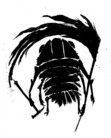Patrick Stuart's Blog, page 2
May 21, 2025
A Review of 'Memoirs of Hadrian'
A slender and capacious book, like the shadow of a flame on sunlit marble.

In the years around the Second World War, Margurite Yourcenar found, through study, obsession and spiritual refinement, a method to travel through time. Thus the book; the mirror of a shadowless man and his true love, and of an Empire, and an Age.
Yourcenars OdysseyThe final part of 'Memoirs of Hadrian', contains a compressed chapter of notes Yourcenar made about, and during, its creation. This alone would make a grand saga, (which is probably why she included it). Here are some very extremely compressed and cut-down highlights;
1924 - Yourcenar concieves of 'Memoirs', gets some way along, then burns the pages as the work isn't good enough. (The first of many such forgettings).
.
Next- Flauberts quote is discovered;
"The melancholy of the antique world seems to me more profound than that of the moderns, all of whom more or less imply that beyond the dark void lies immortality. But for the ancients that “black hole” was infinity itself; their dreams loom and vanish against a background of immutable ebony. No crying out, no convulsions — nothing but the fixity of a pensive gaze. With the gods gone, and Christ not yet come, there was a unique moment, from Cicero to Marcus Aurelius, when man stood alone."
Probably not entirely true but sounds cool as shit. Its curious that Flaubert is also someone who re-wrote the same book many many times. He re-did his 'Temptation of St Anthony' before every other major work.
.
1934 to 1936 - Yourcenar re-starts and abandons the project again and again. Only one sentance was retained of the 1934 edition.
.
1939 - Project abandoned. Despair. Off to America.
.
1947 - In the U.S.. Burn the notes again.
.
1948 - a trunk of old possessions and letters arrives from Switzerland. While going through them, Yourcenar runs into a letter; "My dear Mark...." Who is this 'Mark'? Wait! its the Hadrian book!. Re-commits to writing it (again).
.
1848 to 1951 - re-making the book, but also writing vast sections every night 'in almost automatic fashion' and
"the result of those long self-induced visions whereby I could place myself intimately within another period of time. The merest word, the slightest gesture, the least perceptible implications were noted down; scenes now summed up in a line or two, in the book as it is, passed before me in the fullest detail, and as if in slow motion. Added all together, these accounts would have afforded material for a volume of several thousand pages, but each morning I would burn all the work of the night before."
.
1951 - 'Memoirs of Hadrian' are published.
.
There is much more, in detail, depth, and philosophy, than I have sketched out above. The book that finally was born, is a crystallisation, combination and perhaps last cannibal embryo, of a book that was being researched, written, burnt, re-written, burnt a bit more, forgotten, remembered, re-made, for about 26 years. Consequential years; 1924 to 1951, from the death of an old world through utter catastrophe, to the birth of a new. Triply consequential for Yourcenar; she changed a lot.
This might be what makes 'Memoirs' feel more like a mirror into a living time, and a living soul, than any other book I have read. I feel like I met Hadrian.
(And yes Yourcenar may well have, accidentally or deliberately, crossed paths with those other pre-and-during WWII female historical writers; Rebecca West, (Black Lamb, Grey Falcon), and Naomi Mitcheson, (Corn King and Spring Queen), who were also writing increadible defining works about the same time - what the _hell_ was going on with women in the pre-war world? Was there really such an explosion of talent as it seems to me?)
Hadrian
He is the flame and the shadow of the flame; a god of 'civitas', a bringer of peace, defender of civilisation, reformer, liberaliser, a man who set a boundary to eternal expansion. A compelling, brilliant, charming, dark and self-deceiving man.
So much of what happens around him takes place in a gilded shadow which is in part, simply the darkness of the Ancient world, particularly its sexual politics, and is in much of the rest, the necessary darkness of Imperial power. A truly decent kind, compassionate and forgiving man would not have survived for long as Emperor. You must be half a cunt to do the job.
Really, if you are going to be ruled by a sexually predatory, occasionally mass-murdering (when necessary), assassinating, (minimally, probably), occasionally vindictive, (now and then), terrifying, (in the most gentle, kind and _civilised_ way), highly-intelligent, hyper-manipulative, high-arts loving general (for a Roman Emperor) peacenick, you would really want to be ruled by Hadrian. (At least by this Hadrian). He is sane, rational, reasonable, almost never makes political mistakes, reforms and repairs things everywhere he goes, fixes systems, ensures stability and growth, builds cities, loves poetry and the arts, governs without terror; he is a chill Napoleon.
And yet. The most beautiful darkness wavers around him.
He is probably lying to us about at least some things; either as a consequence of lying to himself, or a more simple deception. (Yourcenar claims in her notes that there were moments when she 'allowed' the Emperor to lie to her.) A few necessary assassinations here and there, perhaps some intrigue with the late Emperors wife.
It would be wonderful and frightening to meet Hadrian in person, here is a fascinating man who focuses on you utterly, disarms you, charms you, subtly excavates you, makes what use of you he can, gently amends you problems and sets you aside, He has the legal and material power to kill you and everyone you love, and everyone they love, and honestly, you can burn the city too.
He swims in liquid power like a shark in saltwater, but, even for this sensitive and self-aware genius, that power alters him and warps his world, his reality, in ways even the master cannot see.
Its the subtlety of his mind that attracts. A different story would be a more classic, punchy, and obvious fall into decadence, then rage and paranoia, of a man made, (or who made himself), Emperor of the known world. What we get with Hadrian is not that, but an alteration, a shift, as if through a lens warping. The subtlety of the mind experiencing that shift, and the fact that he may be unconsciously and directly lying both to us, but first, himself, is what makes it tantalising. Because, if he were sitting next to you, Hadrian could explain and excuse everything he does, and you would believe him.
What is Reality to such a mind, on such a throne?
The Murder of a Hawk
T.H. White, the writer of 'The Sword in the Stone', wrote a book in which he tries to raise and train an hawk in the medieval style, using the methods of a medieval hawk-raising manual.
Its something of a horror story. He has no metis, no actual practical experience of the animal he is trying to train, and day by day, piece by piece, things go horribly, utterly wrong - he accidentally destroys the animal behaviourally, creating something that cannot be used for hawking, but that cannot perhaps live in the wild. Even his constant petting of the hawks head rubs away its natural feather-oil and produces an unpleasant mess. The end is a screeching prisoner that must be murdered or kept forever.

The core of the book, and of Hadrians story, is his relationship with Antinous, a greek, boy really, who he meets on the cusp of manhood, and essentially takes, keeping him until Antinous commits suicide before the age of 20.
Hadraian’s relationship with Antinous, the love of his life, reminded me a lot of this book by T.H.White
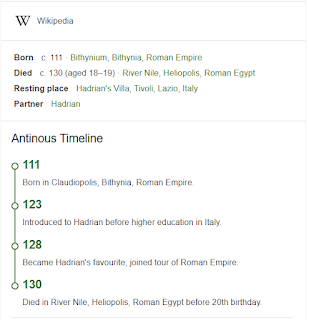

This gets more and more discomforting the more you think about the actual ages of Antinous and Hadrian when they first met, and about the fact that this is Hadrians One True Love.
Truly, this exquisitely controlled and comprehensive man, allows no chaos in his life, almost never loses control, except for this one soul, and the event of his death. Here, for the first, last and only time, Hadrian utterly loses his shit, and loses himself.
Being the Emperor Hadrian, his vast exhalation of grief also takes the form of building an entirely new city named after his beloved where his beloved will be worshipped as a god, creating a Cult of Antinous, a new religion, or aspect of one, in which the deified boy will be worshipped across the empire, ordering statues and presumably paintings of Antinous, making more statues of Antinous, making more statues of Antinous and having those hollowed out so they can be carried around with Hadrian and set up wherever he currently is (the guy travels a lot). Also; more statues of Antinous, maybe some songs and a poem cycle as well.
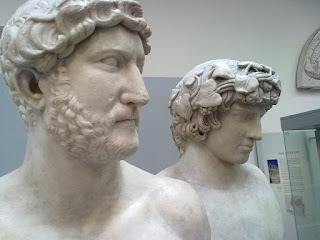 there’s always room for another statue of Antinous
there’s always room for another statue of AntinousWhat is love then? If the vastness of grief is a true indicator of the depth of love, then Hadrian was certainly in love.
Still, he destroyed that boy. Picked up around 12 or 13 by the ruler of the known world. Carted around with him. Adored. Not that smart, but with a near-religious devotion to his Emperor. His final suicide comes in the form of a magical ritual which, the story suggests, was meant to be a gift of life to the man-god Hadrian.
Antinous had no way out and perhaps couldn't imagine or conceive of wanting a way out. The psychological, political, intellectual and even spiritual, (Hadrian is a god*), domination of the Emperor is so total that he warps reality around him. But it seems not everything can be so warped without breaking. Even if Antinous is not precisely a victim in the 21C Western sense, he is certainly a sacrifice.
(Hadrian; “Of course I’m not actually a god.. (I kind of am though).
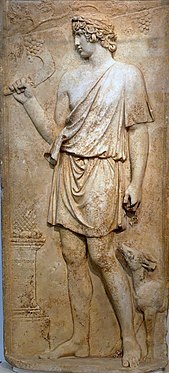
Such men we cannot strongly judge, (though I just did). The gap between us, in power, psychology and distant time, is just too great.
But aren't those gaps exactly what Yourcanar was trying to leap across? She worked 25 years to put is in that room. Why then, if not to judge? Perhaps simply to see, to know. An advanced, expansive, slave-empire, bound, (which may have killed it), a high culture of subtlety and luxury described.
Just as the Emperor can never know what a slave knows every day, (Hadrian himself tells us this), there must be sights that can only be seen from the pinnacle.
(The next time someone asks me for my religious/philosophical affiliation I will just say that 'my dreams loom and vanish against a background of immutable ebony').
May 12, 2025
A Review of MALUSTRIOUS BROOD
“Gnome, Nereid, Salamander, Sylph. Ogres, Hags, Dragons, Basilisk/Cockatrice, Orc, Manticore. And two Very Much d&d , the Catawhere and Eye Tyrant.";

Art, and Expressionist art in particular, is hard to review and think about, so instead I forced the artist to do that, by interviewing them! What follows is a pretty wide-ranging interview gathered roughly into the following general subjects;
TextureColourCompositionFormOrcsBig Ideas
There are lots of close-ups of fragments of the pages, used when talking about specific elements, and because I didn’t want to try replicating any of the full illustrations other than those already included in the promotional text. I wouldn’t want you to take the impression of these fragments as the impression of the works as a whole, let along when held in hand, which creates a much stronger impression.
Texture
pjamesstuart; ok so a huge amount of the book seems to be its textures. Are these different on every single page?
SCRAP_ULTRA_WORLD; Yup different on every page, each was hand layed (with the cut out images on top) out on a piece of real estate sign for ease in scanning. This actually turned out to have some problems later because I didn't cut the real estate signage to consistent size.
pjamesstuart; Did you have any particular plan for these?
SCRAP_ULTRA_WORLD; That each monster section should have its own unique background texture. That's about it
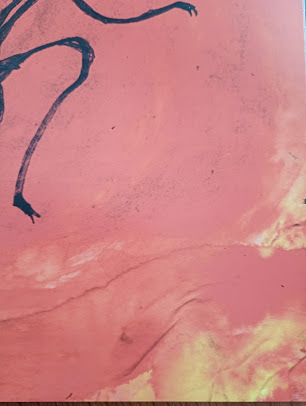 this is printed on the paper (my photo isn’t very good)
this is printed on the paper (my photo isn’t very good)
pjamesstuart; They seem to be made up of complex layers of actual physical materials treated in various ways, and maybe of some deliberate use of digital scanning errors? What else went into these?
SCRAP_ULTRA_WORLD; I'm not sure about deliberate scanning errors..oh wait no yeah the Catawhere has some . Oh and the Orc and Eye Tyrant chapter heads.
Done by dragging or moving an image while it was mid-scan.
One of the Catawhere was done with photocopy fuckery.
Some of the process for the textures involved digging through a box of ink and texture experiments and seeing if anything was suitable.
Or just messing around with whatever paints/oils/spraypaint/ink/paper I had lying around and then letting it dry outside, and then sometimes using it but often reworking it or not using it at all.
90% blind experimentation and then selective curating the results.
Though wanting each chapter texture to have its own feel meant sometimes I went "okay no more ink shennigans , going to have find something else"
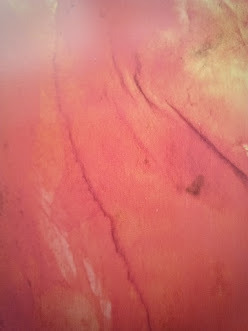 John Blanche once said that with a really good picture,
John Blanche once said that with a really good picture, even the smallest part of it, when examined in isolation,
should be interesting to look at, which I think is true of this book.
pjamesstuart; How did working on the textures intermix with choosing and making the figures? Did it happen in parallel? In Sequence?
SCRAP_ULTRA_WORLD; For the vast bulk of it the pictures were done first, then textures created and pictures arranged as the textures were done.
However the decision to create a chapter head meant needing to create a extra page (as to keep the page count divisible by 4) , and sometimes that meant creating more drawings for the extra texture page.
pjamesstuart; Whats a 'standard' (if any could be), workflow for making a page of Malustrious Brood?
SCRAP_ULTRA_WORLD; Um.. once the drawings were "done" (i.e I thought I had roughly enough be doing a crude layout) , I'd dig through my old projects and experiments and see if there was something. If nothing , try and think of something I hadn't messed around before with and if it felt appropriate to the vibe of the creature.
Then once this , sometimes considerably back and forth, process had created a use texture page , I'd then try and arrange some of the drawings on it.
This usually resulted in frustrations that I was going to have to cover up the most interesting bits of the texture, as none of the texture pages were created with that much considerable with where anything would go on top.
Sometimes the drawings would get swapped between pages as space and overall context demanded. I tried to get all the loose sketches together and also give the more developed ones space to breathe (often giving them their own page just for them)
So yeah it was a whole process of curation , reacting and adjustment , to get the drawings to work with each textured page, there wasn't just in the way of a deliberate plan.
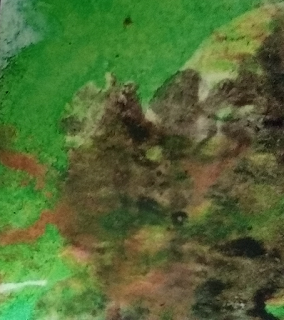
The Orc probably had the most planning as I wanted to have them "echo" through the background of subsquent Orc pages by photocopying and repeating some of the drawings (sometimes on transparency film).
Plus trying to get a "very angry school boy creating a scrap book of murderers , weapons and world war 2 facts" feel to it
A quick video of the boards;
SCRAP_ULTRA_WORLD; Incomplete list of things used in the textures:
Rags, stained rags, old singlet, old t-shirt, design on old singlet blown up with photocopier to giant size, lace, glue, grease, baking soda, rust, blood, ink , spraypaint, butchers paper, vinegar, pva, spray varnish , water colour, ohp transparency , sewing diagrams, house paint, translucent paper, real estate sign imagery
Colour
pjamesstuart; There are many colours in this book. Did you have any kind of conscious plan or intended method, or did you just do everything based on VIBES?
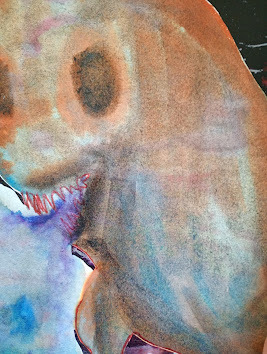 Many forms are almost like beer tankards filled with a thick cloudy brew slowly mixing into something else
Many forms are almost like beer tankards filled with a thick cloudy brew slowly mixing into something else
SCRAP_ULTRA_WORLD; Nothing super conscious , other than seeking a more diverse palette as the project went on
If I had planned it out more , I would of made more an effort to have the Nerieds be more greens and the Sylphs be more blues. As it was they ended up blending into each a little too much.
As a fix for that I post scan adjusted the Nereids colours a little and arranged the elementals by the name <Element> Elemental <Name> so the Sylph and Nereid wouldn't be right beside each other.
pjamesstuart; Most creature-types have a main dominant colour that appears in a variety of forms, and maybe one or two other spot colours. What tells you what colours something is meant to be?
SCRAP_ULTRA_WORLD; Again just vibes. Some got a bigger range of colour experimentation (ogres) , others arguable got too little (Salamander, Gnome) . I think the monsters that already had a strong consistent design, that I myself wanted to redefine (Orcs, the Elemental Spirits) , I ended up sticking to a narrow focused palette , while the ones were it was already wide open (dragon , ogre) I just went with whatever. I'm not 100% sure why though
(Eye Tyrant might be an exception here)
Basilisks got a lot sickly colours , and I wanted to really have some jaundice yellows, bruise purples , infected pus greens in there. Anything to make this thing look dangerous.
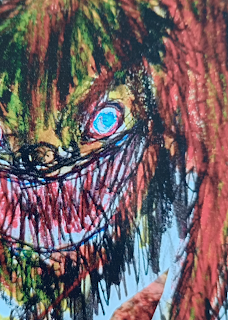 closeup of a highly polychromatic beast
closeup of a highly polychromatic beast
pjamesstuart; What did you use? I see pens like biros, felt tip pens? Some things look like watercolours but could be created some other way.
SCRAP_ULTRA_WORLD; Yeah good old biros, felt tip pens of a variety of quality , ethanol to bleed inks out, water colours, water colour crayons, regular crayons, twink, charcoal , ink , acrylic paint, house paint, pencils, photocopy toner
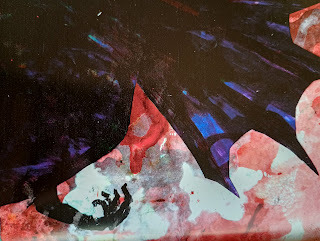
pjamesstuart; Some colouring follows the shading a form might have, other colouring is more like you poured thick liquid into a glass the shape of the creature and shined light through it. Other is like lines of energy within a beast. Do you know when you start out what you are going to do?
SCRAP_ULTRA_WORLD; I think I always start with the "line" and add lines until it's done or it needs something else , then hit it with colour using whatever medium.
Then it's a case of adding more colour or line to fix whatever just went wrong and it either working out or turning shit , in which case start again.
I heavily favour mediums that can put on top of each in any order , as I don't think I've ever successfully done the old "little pencil, colour blocking, final inking" method. I've tried it , but it looks so lobotomized when I do it, I've all but abandoned that approach.
Crayons are a pain as you can't really go over them that well but can successfully go pretty much anything else, and allow colours that lack innate opacity to go over darks.
Back to the question: I have "hunches" and "itches" but every step is a surprise and something like a friendly but heated argument .
I've got a maxim about "an Okay drawing is useless" , so if a drawing feels like it's "okay" (as in I can reliably create something with that amount of Good) , I'll keep experimenting until it hits a "high tide mark" or otherwise rare quality I'm not sure I could get again. (this might not mean it's a final drawing, it might instead be saved to serve as guidance )
Or it's completely destroyed , but valuable data and inspiration is generated.
I think of this as sacrifices to Tiamat; and sometimes you just lose a drawing that seemed to have potential , and sometimes you get a happy accident.
Speaking of which:
pjamesstuart; This isn't really about colour but; some places monster faces & other things are scratched through, or blasted over, so it feels like the page was a screen and was glitching or a photograph that was overexposed. How did you do this?
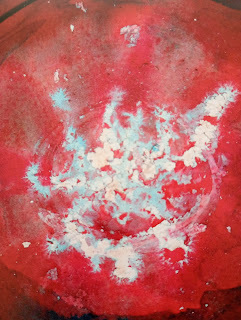
SCRAP_ULTRA_WORLD; This is the whole "keeping going until the drawing is destroyed or brilliant" thing. Sometimes the page actually rips , requiring sticking additional paper underneath. Actually sometimes something on the other side ends perfectly fitting and getting used. The eye on the Antiphoenix from Veins of The Earth is actually a mark on a piece of paper that was beneath the initial drawing . It was revealed when a hole was torn from working on too wet ink and then permanent attached to the drawing when it perfectly fit.
This is Tiamat throwing me the occasional blessing for everything in art and life that I've inadvertently sacrificed on her altar .
One of the Manticore's has a similar effect , but I think it was me scrapping back layered crayon to rework something and the underlying effect was really good so kept it. I think I added a pupil though?
Composition
pjamesstuart; Thanks for the responses! Next I want to talk about COMPOSITION, (after that will be 'form' which will be the last one).
Do you know there is a kind of natural curl to a lot of your single-page compositions? Especially for the more lithe & loopy monsters? I will try to make a little image of this.
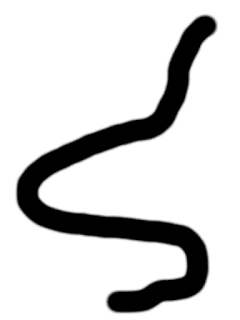
It begins at the top left, curves into the centre or lower right, forms a pool there and spirals out into the lower left again, often as a tail or limb
Other compositions are 'blot' or 'block' monsters which are placed like they were poured into the belly of the page and then slowly spread out.
The 'loop' in particular reminds me a lot of the Z shape Frazetta often worked into his painting.
Did you have any particular plan for composing the one page and two page images, or any effect you wanted to achieve?
What was the methodology?
How do you know if a page 'looks wrong' or 'feels wrong'?
SCRAP_ULTRA_WORLD; HUH
I did not know there was this SECRET SIGIL
Out of all the haphazard intuitive processes that went into this book, composition is probably the most haphazard of all.
The considerations are mainly so each drawing gets enough "space" and doesn't too greatly mirror or be similar to the surrounding drawings (including any on a opposite page)
EXCEPT when its a collection of "concept" drawings, where I thought it grand to show or suggestion the developing of the process and the various alternative possibilities that rapidly fire off in my brain
Other considerations is to with the gutter and place the monsters, were possible , so they don't look like they are running away into the gutter (so heads to the edge, tails to the spine)
Form
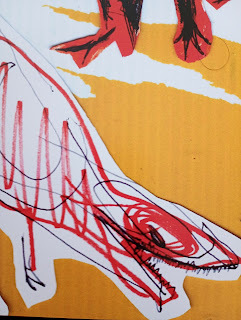
pjamesstuart; Edge Detection - does your brain have this? Because the vision of the world one often gets from your work is that things often just don't have boundaries, but kind of vibrate like quantum particles, or blur like a time-lapse map of the borders of eastern europe. I mean, are edges a thing in your reality?
SCRAP_ULTRA_WORLD; Yes But No. Like there's this deep deep deep contrary instinct in me that always seeks out contradictions, exceptions, inconsistencies, stray threads and just Points Them Out. I think it manifests in art (somewhat) by a resistance to going "yes this definitely the Limits Of This Things" , and a desire to portray the buzzing border of potential movement, past movement, spiritual intensity, failure of perception, stink, noise, unclarity
So it's like Post Modernism going "look at all these things obstacles that prevent us from seeing truth"
but unlike.. whatever strain of post-modernism is that kinda goes "so..guess truth isn't really thing", instead we must see The Noise as well as The Signal
like understanding the limits of truth should make us appreciate the effort for truth and not dismiss it to seek solipsism
pjamesstuart; dang you actually have a philosophy behind this
SCRAP_ULTRA_WORLD; It's more I getting philosophy from it if I look at it and think about Why, but ultimately I do it because it's my nature
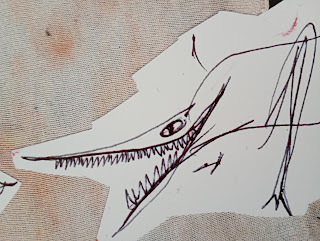
pjamesstuart; Is a body for you just a carrier for eyes and teeth? The toothed grin is like a signature for your work. (Also, did you know in miniature painting some painters emphasise 'eyes and teeth', because they seem to play some dominant role in helping people perceive and organise a facial form?) If you have EYES plus TEETH, what is the third or fourth thing you need to show what something is?
SCRAP_ULTRA_WORLD; I think they are just really good at giving a coherence to something incoherent and because my drawings risk/are total incoherent explosion , slapping the teeth and eyes in there really gives it a hook.
The spine or jawline tends to be the first thing I draw
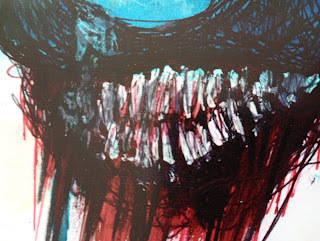
pjamesstuart; Do you study anatomy? Some images strongly suggest yes, but it is as if there are two spirits fighting inside much of your art, one trying to locate actual things in space, with muscles and gravity and skin and stuff, and the other being more like 'wait what if there was none of that and things were basically energy and not 'things' at all'
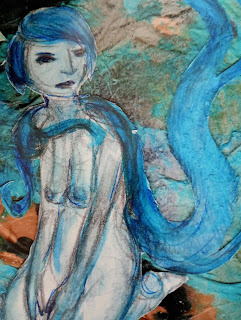
SCRAP_ULTRA_WORLD; yeah but badly? I'm terrible at drawing things in front of me , I don't have very clear "mental images" , drawing almost feels like sculpting with twitchy ambulatory wire to me? Like the pen starts making marks and I battle with it to get it to do something I want.
But spending frustrating time trying to draw accurate from a reference does help inform this "sculpting". To that end , I've attended life drawing books, have several (Probably over half a dozen?) anatomy books (human and other animals) and spend time and effort learning about the muscles and the bones etc.
I also find it really interesting because I Too Have Bones and Muscles and The Desire To Improve Them.
But I think it's know how impactful departure from plausibility is when it comes to monster design
pjamesstuart; Do you have preferred shapes? (A slight teardrop shape seems to come up quite a bit in a lot of your art.)
SCRAP_ULTRA_WORLD; I try and avoid falling into patterns too much , but the most consistent shapes that show up when I start scribbling are:
Long shapes like snakes, eels, sharks
Beaked shapes or triangle head shapes
Ambiguous quadrupeds
Hunched over big limbed bipeds
pjamesstuart; Do you know when a form is right? How do you know?
SCRAP_ULTRA_WORLD; It's like.. when someone tells a joke and the when you realize that you think its funny? In fact laughter is sometimes my reaction to when I get a form or expression right. There's a sense of both surprise and recognition ?
When a form is wrong.. it's either because it's obvious and absent of energy (something can be obvious and Have Energy though) or like something about it interferes with its own dynamic and needs The Energy Bolded or The Blockage Destroyed . Or I guess it's just gone completely wrong and its not even recognizable.
Orcs
pjamesstuart — How on earth did you come up with so many good pictures of fucking Salamanders? 😂 There's like three bangers in a row here.
SCRAP_ULTRA_WORLD — Lizards is a good shape
Think the palette there is a bit monotonous but the expressions are really good
Conceptual I'm most pleased with my riff on the orc
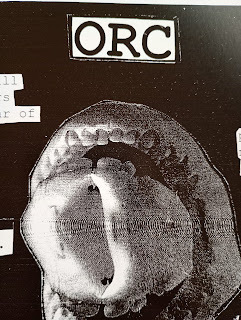
pjamesstuart — Tell me what you like about the Orc concept you came up with.
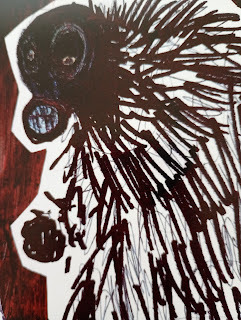
SCRAP_ULTRA_WORLD — That it riffs off the old use of it meaning "spirits of the dead", Tolkiens use of as the spectre of industrialized warfare, and dehumanization monstrosity cycles.
Plus having a fancy angle in suggesting they are a memetic virus that co-opts the " immunisation" response ( the fear of the enemy becoming or being orcs is a vector for infection as people justify their increase in brutality and ruthlessness)
But also can work as a pure game utility "it's okay to kill these guys because they are distilled war criminals"
Visually I tried to get some of the Orcs to have this ambiguous mix of panic, hate , anger, fear
While others are pure hell bastards
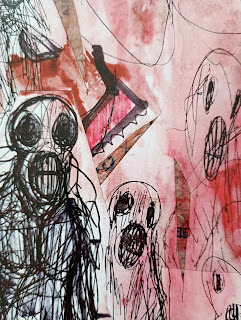
But yeah one of the nasty things about war propaganda that is tapping into the legimately fear that any human population has a capacity for brutality, and that brutality is easily expressed on outsider groups
And by exploiting that fear , it then feeds and utilizies that capacity
To be honest my original motivation for putting design notes in between the chapters was do a bit how fucking weird dominant voices solution to "fixing" orcs was to lean hard for into "we are 1000% here all our fans making their sexy noble savage baddie OC 😍😍😍"
But nah didn't think it was worth the page space doing a The Kids Aren't Right bit
The only bit I left in like that was mentioning the extra limbs on the Catawhere
I also had a bit about manticores getting wings from Gygaxian shenanigans idk just seems like filler
Ditto some early waffle about the origins of some of these, like fuck I just wikipediaring, people can do that themselves
Big Ideas
pjamesstuart; That was all I could think of to ask about the art in a 'pure art' sense, like about the acts of creation and construction, but I haven't asked any like 'meta level' questions, (which I tend to avoid), but you did have a fair amount of complex ideas about Orcs, so;
Are there any 'big ideas' you had about the monsters?Anything you discovered or thought you understood more?Anything you were trying to get across?Is there..... a SUBTEXTS???? or like a metaphor or meaning or whatever, in these images?
SCRAP_ULTRA_WORLD; Yeah any "big ideas" I tried to include in the chapter heads.
While the initial idea was "do a bunch of versions of that monster" , the process involved exploring both what is the essence of that monster both visually and conceptually/psychologically.
With both very intertwined and probably inseparable, but still distinct somehow.
think exploring the concept-essence of each monster was far more of a reductive process; like is a hag a hag because she lives in a hut in the wilderness? Or is a hag likely to be in the wilderness because she's feared ? And then why is she feared? It's her power, and what are her powers etc?
Compare a manticore being in the wilderness , to me you start losing something of the manticore if you take it out of the wilderness, there's something about the manticore that is a manifestation of an unknown wilderness and the wild stories that start coming from it.
Actually as an aside here these are actually different wildernesses. A wilderness with a hag in it , is the wilderness "beyond the hedge" , a wildness just outside your lights and most tread paths. (so could be remote villages, sewers , slums, ruins, back roads, islands etc).
While manticore wilderness is "here be dragons" wilderness; blasted nigh untamable terrains and desolate vistas.
Having a "here be hags" on very remote area of the map or a manticore living in a forest a hour away from a city , creates interesting questions but I think both are subversions or deconstructions.
As in doing something interesting with a disconnection or conceptual jolt, which only happens if something about it doesn't quite make sense.
While exploring the visual essence of each monster was (mainly) and expansive process; seeing how far I could push it basically.
But note when I talk about any of this I want to be clear it's not the "ideas, theory, then art" that art academic likes to present as The Only True Path. All this is stuff I think about in retrospect or sometimes as a weird chattering aside in my brain as I work on something; it's commentary but it's not the navigator or captain
I think ultimately art is the space the between words, if its completely reducible in words then you should just use words
Good art often makes you be able to think about stuff and come up with big strings of words and ideas , but it's a terrible mistake to think that's ultimately Is The Work
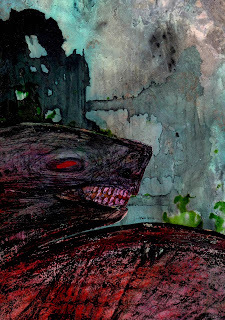
SCRAP_ULTRA_WORLD; To use a tree metaphor , it's like a fruit tree. The art is both the tree and the soil and the mycoline web and whatever else . The words you can say about it is the fruit. Fruit is portable, countable, immediately digestible and a trade good. But to think only of the fruit and the not the tree (and everything connected to the tree) is a deep and profound foolishness .
As is dismissing any fruit tree not currently having pickable fruit as basically not existing
EDIT: Though this metaphor suggests as we only plant fruit trees for fruit , we only should create art to talk about it, but I reject both of these concepts, but must acknowledge that people could think that a) That's the only reason to plant fruit trees therefore the metaphor says..
SCRAP_ULTRA_WORLD; Wait one more thing and jumping back , with a couple of the monsters (gnomes, orcs) there's like a cluster of different big tangled concepts and my reduction process would be a deliberate rejection of basically alot of the most popular , but arguably essential concepts, that exist in current culture.
Orcs I guess digs deeper into the psychological underpinnings of the "barbarians at the gates" and brings in some of the Tolkien fear of industrialization, so that's still engaging with the popular view.
While gnomes basically rejects everything anyone has done in the last 100 years and tries to include knockers and kobold mythology as gnomishiness
FINAL STATEMENT
pjamesstuart; Excellent. Finally, would you like to end the interview by saying anything grand, insane, overwrought and/or megalomaniacal? (Purely in order to maintain SCRAP WORLD brand coherence.)
SCRAP_ULTRA_WORLD; THERE'S ALWAYS FREE CHEDDAR IN A MOUSETRAP BABY
Behold; monstrum
A book of Others. A book of visions. A book where every night for a month, or a year, someone slept and deliberately had nightmares, or at least, deeply hallucinations, and each morning they woke up and drew pictures of those nightmares. (And then narrowed them down to the best.)
Every sophont dwells within a necessary cage of thought, one concept piled upon another, growing in slurries and small leaps, but only ever from one central point. Yet, in every case, the boundaries of expansion, of what can be comprehended, and of what can be imagined as comprehended, must be challenged; such is the flame of life and mind.
Thence; the Other, the known but un-known, a beast woven from what is and what may be.
The meaning of this is always discussed; mapped one way, the book of Others is just a map of self, for where else can the Other be conceived, so that, in roving further and imagining deeper, seen as a whole, the conception of self becomes more clear.
Others say 'no shut up this is actually a book of monsters' - a searchlight pointing outwards, illuminating the storm-wracked unknown, and the metaphor of a searchlight is perhaps the best; for those at one end, an honest attempt to pierce the dark, attention pointing out, but for those watching from the silence, a statement saying 'here am I'.
As critiques of course, we consider both at once.
All I dislike about it is the glued spine but book production and distribution from New Zealand is fucking nutty so take what you can get frankly.
You can buy ‘Malustrious Brood’
HERE
May 9, 2025
Song of Audacity
What defined them, more than any single quality wastheir ever-burning humanity. Strangers to fanaticism and despair, theContottieri, or ‘Sky Corsairs’ were engaged fully in every aspect of humanlife.
These were no bare-hulled mercenaries or joylessMalmukes, nor the more-human, but shaped and regulated, citizen-soldiers of ademocratic polity, who might carry sharp personal hearts, yet beneath serial-numbereduniform kit. Call them pirates if you will, and some were purely that, organgsters, of which; not a few. But they were poets, artists, creatures of business(all), technicians, explorers, adventurers, lovers, highly aggressive assaulttroops, brave as Lions, as neurotic as cats. Cunning mercenaries all and men ofArt.
Let none say they were not principled men! Only thattheir principals differed, even within themselves, and were always in directcontact with an immediate material world of staggering danger and opportunity.And how else may a principal be measured, questioned, sharpened or lived with,than through, and by, holding palm-to-palm, the mutable hand of Fate?” –Francis Malledini, ‘Wars of the Centaurus Arm; the Condottieri Stella.
Models, Painting and Aesthetic
The core idea that began this was; what if Mechwarriorwasn't fucking ugly?
The Mechs of Mechwarrior have a battered Ford-Factoryboxy midwestern aesthetic which; fine if you like that sort of thing but I havenever once fantasised about getting into one, any more than I have wonderedwhat it would be like to get into a bus.
Added to that was my recent experience with applyingdecals to miniatures, for the first time, using Microset and Microsol.
For those unfamiliar with the irregularly curved pauldronsof Space Marines - that is where the symbols go. For which; either git realgood at freehand or use decals. And if you do use decals, get ready to suffer,for the decal is small and wants to lie flat, and the surface it goes on to isirregular and curved. And small.
Various Mythradic mysteries attend this process - thesecret of making very fine and small cuts around the radial edge of the decal,avoiding the symbol in its centre, the careful applications of light varnishbeforehand, of clear paint solution afterwards to equalise the surface sheen,of very careful staining and weathering to help disguise seams and failures,(without also obscuring the symbol on the decal itself of course). Such labyrinthsof near-alchemical fury.
All, or most, of these were abraded, and in some cases,vanished, by careful applications of micro-set, (which prepares the surface andallows the decal to 'melt' onto it). and Micro-sol, (which does more forciblemutual adhering later). Suddenly my transfers were going on easy, and theylooked good!
This lead me to a thought; what if you designed, orbrought into being, a model line, specifically based around the use ofdecals. The models, and the background, would all be designed for transfersto be applied.
What transfers though?
My mind turned immediately to the High Middle Ages/earlyModern period. To the Italian Wars, and to the glories ofpattern-on-pattern-in-pattern heraldry. Of stripes and stars, heraldic beasts,coats of arms, cheques, dags, trinary hanging ballsacks and geese-rampant, andalso a little of the Formula-One ultra-capitalised high-speed racer, their carblazoned with signs and adverts, of that one boxer who took money from a sponsorto have their branding on the bottom of his shoes, so they would bephotographed if he was knocked out, and somewhat of Games Workshops post-futureheraldry where the iconography of trans-stellar hyper-corps and meta-statesmelts into a dream of symbols.
Above all I dreamed of actually-attractive mechs, thingsdesigned by Italians rather than by Midwesterners; absolutely slathered inbright, confident, blazing heraldry, of bobbaunce and a vision of outgoingprideful masculinity taken from before the Great Renunciation and thedemocratic business jacket.
These machines would be battered and weathered by war,but their flags and pennants would flutter proudly, even if they have to be madeof electrostatic material to make them fly when there is no wind, or no air.
The patterns, signs and symbols on a mechs chassis wouldbe the record of its actions, of allegiances so old the current pilot doesn'tknow them, of contracts taken, deeds done, of heroism and shame. As inheraldry, each sign or pattern would have some meaning, either obvious orhidden.
And all of this to be personal; no uniforms, noregulation, instead a culture of fantastic mercenaries, perhaps bandingtogether in 'Companies' long enough to wear similar heraldry, or at leastwearing the sign of their current company, but perhaps moving on from that,fighting alone or in loose associations of 'free lances'.
Mercenaries, but not without honour. That takes us backto the Condottieri Stella.
 Tomy Zoids Zeeva Zevle battle vehicle ostrich type NIB 1992
Tomy Zoids Zeeva Zevle battle vehicle ostrich type NIB 1992The ‘Cultures’
Don't call them 'Empires', they wouldn't like that. Thinkof them as tendencies, or smears of interstellar power. Each powerful enough,in its own way, to provide a sincere threat to the others, and each alsodesperately vulnerable.
The Cultures are what might be called transhuman. Atleast for any that once were human, they are no longer so. Others may be alien,though it’s hard to tell for all seem alien now. Cybernetic hive minds,thinking world-spanning biological substrate, carefully genetically engineeredBrave New World Climax Societies, perhaps mildly extra-causal semi-sublimedpolities, extradimensional half-gods, swarms.
None of the 'Cultures' are 'evil', at least in theWarhammer sense. At least no more evil than any other Empire. Sure they mighthave done a war crime here and there but that is in the past. Nor will theycompulsively eat your brain, or turn you into one of them. Though they may makesome strong arguments that you should join. They can negotiate. They pay well.
They have reason to fear each other for each Culture isso different that the magisterium of the others makes them a potential strong,strange and unpredictable threat. Probably the galaxy belongs to one of thembut none are eager to start the world-burning hyperwar that might complete that praxis. They are old. They are maybe abit too comfortable. They are willing to wait.
But the Centaurus Arm remains unclaimed, and it is hometo strange wonders, secret histories and relics of forgotten time, to theresidue of ancient climax-species and the mathematics of unknown philosophies,and the wild evolved residuum of their existence, not to mention all theextremely valuable basic resources that any 'Culture' needs; water,heavy metals, rare materials and so on.
Each Culture would quite like the Centaurus Arm.They each edge closer, unwilling to commit, fearing the apocalypse. Far fromhere, across arms of the galaxy, each faces the other, quietly, across ahundred thousand minor volumes. No-one wants it to all kick off. Even the bigcomputers can't predict how it might end.
Hence; proxies. Fractured tribes of tech-denying humansare moving through the Centaurus Arm at a glacially slow pace, aboard massivegeneration ships and hollowed out moons jammed with crude fusion drives. Theyare even fighting each other occasionally, and they have a particularritualised form of warfare which limits the long-term damage of theirconflicts. They don't use nukes, complex A.I. or bioweapons, let alone ontologicalor reality-scarring weaponry. It’s basically monkeys fistfighting each other incrude machines.
So use them, employ the humans to stake claims,gain resources, control paths and vectors. They are a deniable, (thougheveryone knows everyone else is doing it), cats-paw, and they respond well topayment in gold, (as well as other resources). You can buy them off with minortoys. They even set up complex social and economic organisations to arrangetheir own exploitation! You don't even need to send in agents to hire this orthat warband or kin group, instead they self-organise into 'Companies' and evenpitch for 'Contracts'! You can just pull them off the shelf.
From the perspective of the 'Cultures' this has only beengoing on for half a millennia, so early days yet. As the humans see it, theirwhole sprawling culture has adapted to one of mercenary service, and manyCompanies and Capitanos, have grown ridiculously wealthy doing it. Some haveeven become rulers of moons. This has shaped the whole of human culture intoone where the flaws and virtues of the crafty mercenary philosopher king arethe dominant ethos of the whole race. In a way they are all CondottieriStella now, for, though they don't always wield institutional power, these arethe heroes and leaders of Man.
Humanity and Humanism
Neither bigots nor fanatics, but not necessarily 'good'.Who are they? They spend their money on libraries and art, on music and display;the culture of the Condottieri Stella is a savage high culture, not a milkydemocratic one. Pride anneals all, the pride of men and women ready to risktheir lives, and combined with this; a love of all that is human; of love,friendship, loyalty and affection, and of human culture and human lives.
I see them like Renaissance Princes, or at least, aimingto become such; gold gathered from the battlefield spent in the courts of man, ownersof libraries, sponsors of artists, of painters, sculptors, musicians, engineers,where the sponsorship of technical art and useful science, goes alongside withthat of the fine arts, where corporate power is unsteady, due to the chaos ofwar and vast distances involved, where the power of science and technology islikewise, potent, but shattered and hard to scale.
In part because the culture of the Condottieri Stellarefuses full submission to the machine, in other, the irregular supply ofstrange resources. In part because the Cultures, the likely-alienbackers of the Condottieri, for whom they fight their proxy wars, specificallydon't want them to progress past the singularity; that might transform theminto a possible competitor, such a powerful agent would require an equivalentresponse from an opposing 'Culture', which would quickly spiral the CentaurusArm into the destructive and unpredictable hyperwar the 'Cultures' were tryingto avoid.
So Humanity remains, retained as a useful and limitedtool by the Cultures, and by the deliberate refusal of the Condottieri, andtheir specific orientation of their own piratical high culture around theproducts of unaltered humanity.
Since the Condottieri Stella are the highest-statusfigures in their own societies, and since they are a source of irregularfunding, resources, and of martial interest, they shape the ethos of thosecultures.
That the Condottieri Stella have no single fanaticalgoal, or single grand opposition which justifies and unites them, does not meanthey do not have ideals, or dreams of past and future, or questionsabout the meaning of their lives.
They have lots of ideas, they throng with them, for aCondottieri Stella is also, as well as being a mercenary, a bandit, a captain,a C.E.O., a Patron of arts, a friend and ally to some and foe to others, isalso a philosopher, or at least they read philosophy. They may have writtenbooks, or at least hired others to do so.
While other wargames might dispose the profits of a successfulcampaign into materiél, or raw status, the Captain of a Condottieri StellaCompany, leaves behind them, a trail of books, paintings, sculptures,performances, music, films and poetry, a kind of living library which serves torepresent them, their company, and their ethos or philosophy.
True some Captains might be interested only in propaganda,in forms and stories sufficient to push up their payments and burnish theirreputations, but as others would point out, this also is an ethos, though itdoes not call itself such.
Others; many, have dreams; ideas about what humanity isor should be, of mans relation to the immensity of time, of the Cultures, ofthe Centaurus Arm, of God and sorrow. Some are tragic, some positive, someempirical, others abstract. Some tell their story in the blazing of pennants,others speak like funerals, guarding their poems and philosophy like grievingturtles.
What matters is that their ideas are human and that theyhave them, and that they matter. Fighters argue over these things, they mighteven come to blows. Friends might be divided by philosophy, or art, while long-timefoes might find themselves united by a common theme, a mutual appreciation ofthe meaning of a life, or by love for an aesthetic, though they must battlenone the less.
That these are battles of ideas does not mean they arebattles of extinction, but arguments via arms. Always the Man has the Idea, notthe other way round. Always there is consideration, mulling over of concepts orideals, thoughts of process and precedence, of final ends against currentmeans. Always questions of virtue and expediency, honour and survival. The verywrestling with these questions is the animating spirit of the game. TwoCapitano's might battle on the field of war, then agree in the opera house, twoco-philosophers could end a battle with a chess game, or a debate. You might beable to talk them out of it. A man might weep for his enemy and deride hisfriend.
What I describe here is an annealing of a culture of deephumanism with one of controlled and ritualised violence. The personal,political, religious and ideal interwoven through the core humanexperience sharpened and made vivid by the extremity of war, of life and death.
That such figures care about money is no confirmation of hypocrisy,for money is never, or rarely, all they care about. Always they balancethe needs of the day against those of the morrow, the passions of the idealagainst survival. A miser might fight to bitter ends if well-resourced andrightly motivated, while an honour-bound hero might retreat, thinking only ofthe survival of their company and soldiers, unwilling to expend their lives,this time, in too straight and narrow a combat.
The intermixing and continual balancing of complexmulti-layered motivations does not corrode the ideal or produce a scene ofgold-gathering hypocrites, but exposes and enlightens humanity by placingcontroversies of the ideal in the only place they ever really exist; in thehands and hearts of living souls, bound by material condition and limitedcircumstance.
In the world-view of this game, high ideals in the handsof those who have only such ideals, who are driven only and entirelyby the ideal, are worthless, and would be seen, (by the characters inthis game at least*), as a moronic bashing together of toys.
To risk a final glorious charge, in order to stand by aprincipal, or hold to ones honour, might be very glorious, but if that chargerisks the whole life and future of a company, where then does virtue lie? Instanding by principal, or taking a practical path, for the lives one wagerswith are not one’s own. Sane people may disagree on this, and even soulsdisagree within themselves, and that is the kind of choice and turmoil thatSong of Audacity is made to express, for the turning over of virtues and decidingof fates, not just once, but over time and long campaigns, and the interweavingof the wisdom of the moment with the wisdom of time, that whole process, is thehumanism I am talking about.
It's not interesting if they are shit people. They mightbe 'bad'; manipulative, acquisitive, back-stabbing, but such a character can be'good', to those they ride with; a provider of futures, a shaper of fates, anda magnificent patron of arts which may burn through time, (think the Borgias).Likewise a soul may be craven, calculating, willing to retreat, but shouldnever be a coward exactly, for in this careful weighing of the moment againstthe future, they preserve not only themselves but their Company, theircompanies families and futures, as well as the wishes of their patrons.
The Game Itself
A 28mm wargame based around mechs, and maybe a handful oftroops. No more than 30 models per side. The high-status leaders are always inthe best mechs. These would be scaled at about the size of the ImperialSentinel, with some a little bigger and some a little smaller.
There are only humans in this game and they arealways fighting each other for money. This is explicitly a game of contractsand resources, and the contracts are dietetically directly *from* the Cultureswhich have hired each side in this battle to do particular things.
Mission objectives would be largely asymmetric and blind.Each side might be there to do a quite different particular thing, and wouldn'timmediately know what the other side was there to do. It might be possible forboth sides to win, or for both to *lose*, monetarily at least.
A Company can 'break contract', going off the books,perhaps to escape what they see as a losing situation, or even imbued with thespirit of Ares, swearing vendetta against a rival company, though that may nothave been in the contract.
To avoid a 3rd party playing DM, this would be mediatedthrough smartphone. You would have all your rules online, and a living list ofyour Company, with its current state and resources. Then you and the friend youwant to fight would go to the app, sign in and confirm some rough details ofthe battlefield, and the app would act as each of your 'contractors', sendingmission objectives to each players phone separately. At the end of each turnyou would update basic details of what objectives and damage you have taken,and confirm the other players losses and objectives. There may be 'turnarounds'where, in the middle of a battle, your 'Contractor' suddenly changes what theywant you to do, and why, perhaps offering increased payment for certain goals.
The record of your Company would be held online and ifpeople wanted to team up together in larger narrative battles, you could scaneach others phones to join an alliance for the day.
As in Necromunda and Mordheim, the presence of cashearned from battles, and of damage taken, troops lost, repairs made, alliancesbroken or stood by, disasters, successes, friends and enemies, would make the'Company' a character of its own.
The cash sponge that stops super-successful Companiesfrom running away with everything is the funding of arts, artists, libraries,philosophies, music, culture, technology, etc etc. Naturally as a Capitanobecomes more and more respected, they become more like a Prince, and as aPrince, they lead not just a warband but a collection of aesthetics and ideas,leaving their print on human culture across the Centaurus Arm. This 'CulturalVictory' effect is the true status symbol for Captain and Player alike; thosewho are most successful and leave the greatest mark are written into theofficial history of the game, their aesthetic and ideas becoming a strand ofhumanities great over-culture, which others may align with, copy or defy in thefuture.
The Modelling and Roleplaying
You would have to do this yourself, off the books, but asthe game manufacturer, False Machine would sell transfers and symbols forvarious Contractors, tendencies, alliances, battlefields, achievements, ideas,principals etc, and you would be able to apply these to your mechs to showwhere they have fought, what for and why.
Or you could just assemble your mechs and decal them withwhatever you think best, and base your Companies philosophy and history onthat.
The subtlety of owning and developing your philosophy islikely too complex for Wargame mechanics, we would have to rely on gamers tothink about them and roleplay them, (we could include it in the RPG). The gamecould provide potential reading lists for people beginning their philosophy.
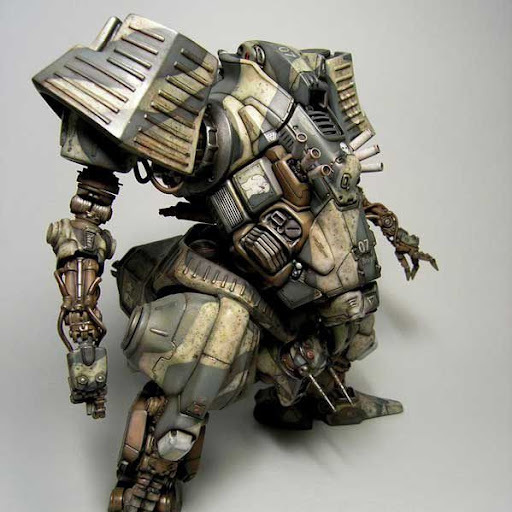 Kallamity 135 scale HDM-07 BRIEGEL I master, 2005
Kallamity 135 scale HDM-07 BRIEGEL I master, 2005
Mech Design
Anything, just not ugly, and it must have wideflat surfaces for decals.
I dream of mechs influenced by, designers likeKallamity. (But not copying; Kallamaty’s designs are precisely arrangedfor the scale they are at), and also by early race cars, the more vibrant endof the Japanese robot market, mixed with the neo-industrial style of 40K,especially the Ad Mech, Imperial Guard and, Tau and of course, Knights.
No antigrav, and a healthy dose ofanthropomorphism.
Kitbashing would be fine and dandy I think. We could evenstart of selling 3d printed kits to alter or amend GW kits and other intosomething more ‘Song of Audacity’
----------------------------------------------------------------------------

* I am not against this in other fictions but it isspecifically not what this one is about.
May 4, 2025
VotE:Redux – Agriculture
Big lie – agriculture is impossible underground. But ofcourse that makes the whole setting a lie, which it is. Since VotE wasoriginally a ‘more-pseudo-naturalistic’ view of an underground world, acceptingand systematising that pseudo-reality just takes me closer and closer to thepoint of; “this wouldn’t actually work”.
You could never have enough rope. Never carry enoughlight. Never find enough to eat. Never stay warm enough. Likewise, you couldn’tgrow things underground. In a way it would be more honourable to accept a morehighly fictionalised Underverse with lots of light giving mushrooms,flat-floored caves and convenient cities harvesting something or other.
Still, we have come this far and perhaps it might beinteresting to consider possibilities, even just for their own sake. So;
Who Needs to Eat?
Largely mortals, and those who feed upon them.
‘Mortal Feeder’ in these terms includes anything broadlylike a man which feeds on the kinds of food men need, and also those who feedupon such men.
Omnivores like Humans, Cambrimen, Chaos Goblins, Dvargir,Knotsmen, Funginids (usually), Olm (though they are Uncivilised), RayMen, andTrilobite Knights.
Rare obligate civilised predators like Opal-WingedChiropterae, Soft-Heads, and Vampires. In particular there will usually only beone Soft-Head or Vampire in even a large city.
‘Non-Mortal’ in this sense means less ‘immortals’, butthose who are not part of an easily comprehensible food chain, or who simplyrequire no sustenance, like Golems (many Vizier of Deep Janeen), Aelf-Adal,Archeans, Silichominids, Substratals and the Dead. Though each or all of thesemay require abstruse or specialised sustenance, for which a complex mortalpopulation is usually a boon.

Populations
This is the most made-up part of everything. Citiesdefinitely couldn’t exist underground but we must build an illusory scaffoldingto make it feel as if they could. I base my estimations on a veryshallow understanding of desert-cities during the vague-medieval world andancient world. If I want to come up with figures about how many of such andsuch there should be, then I begin with the idea of places in a vastdesert, and with a culture like that of a desert people.
Proportionate Food Needs High – 20,000+ mortal feeders
This many mortal feeders with attract, sustain and besustained by, complex systems of power which will almost guarantee asubstantial non-mortal population. The functional population could be 40or 50 thousand.
Likely the seat of an Aelf-Adal Terror-Lord, or a Capitalfor some more-mortal power, such as Knotsmen or Dvargir. Should be thecentrepiece of a Campaign and/or the only or dominating major polity in a largeVolume.
· Roll two, three or four times on three or fourtime on ‘Common Systems’
· Roll once or twice on ‘Rare or Singular’ list.
Medium – 7,000+ mortal feeders
A small town with a 100% mortal population.
A medium-sized City (10k to 12k) with a large majority-mortalpopulation.
A large city(20k or more with a majority non-mortalpopulation.
· Roll once on ‘Rare & Singular’
· Roll twice on ‘Common Systems’
· Or; ignore ‘Rare & Singular’ and three timeson ‘Common Systems’
Low – 500 to 5,000 mortal feeders
A 100% mortal village or small town.
A large Town (5k to 10k) with a low, (10 to 30%) mortalpopulation.
A City (up to 50k) with a very low (1% to 3%) mortalpopulation.
· Roll twice on ‘Common Systems’
Experimental Agriculture Table
Common Systems (d10)
1: Natural boon, Vulcanism
2: Natural Boon, Radiation
3: Natural Boon, Migration Route
4: Immaterial Exchange, Gheistoculture
5: Immaterial Exchange, Mnemoculture
6: Immaterial Exchange, Psychoculture
7: Immaterial Exchange, Umbraculture
8: Immaterial Exchange, Somnoculture
9: Dumping Ground
10: Food-Malmukes
Rare & Singular Systems (d8)
1: Autophagic Urbanism, Heads = Ourouboros, Tails =Looper City
2: Elemental Citizens
3: False Sun
4: Inwardly-Infinite Ontological Harvest
5: Kaiju-Mine
6: ‘Kite’ Nation
7: Predatory Urbanism, Heads = Fisher-City, Tails =Psychic Projecton
8: Stable Gateway, 1 in 6 chance of Sky Hunters
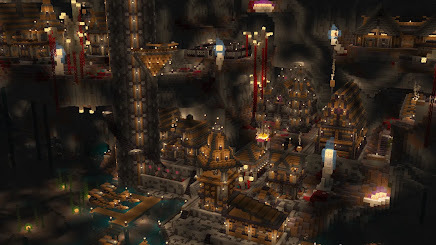
Common Systems Natural Boons
(Or quasi-natural. At least these are not specificallysupernatural systems and are usually related to the environment.)
Vulcanism
May be no more common in the Veins than on the surface,and much more dangerous, as the gasses produced will have nowhere to go.
Nevertheless the HEAT would be incredibly useful, feedingall kinds of life, fungal forests indeed. If the runoff could be managed somehow (elemental or magical aid?) it might form the base of a valuable nitratesource.
Radiation
Plutos realm. A long-standing eruption of radioactivebasalt, or some strange and complex xenolith still humming with radioactivity.This could even be an Archean or Substratal Keep or Embassy, forming a kind ofculture-within-a-culture, or a quarter, while also generating energy for therest of the settlement.
Citizens farm black radiation-eating fungi like the massinside the Chernobyl reactor.
Migration Route
A huge and regular migration of flying beasts likeLamenters, Micro-Bats, Mega-Moths or some other stranger species that may livelargely on the surface, or even exist between realities, but which passesthrough this chokepoint at predictable and regular intervals.
Could be something as simple as airborne spores orfloating plankton from some higher realm.
Immaterial Exchange Environments
Rare Energy Exchanges can be the basis of an Underworldfood chain; entities that can convert something usually inaccessible to our realityinto real and consumable flesh.
(This helps get rid of all the ghosts and dreams fromthose endlessly compacted worlds, of which there are simply too many, too much.See Design Commentary below.)
Gheistoculture
Bee-sized bats with lucent wings, small enough to feaston the ghosts of insects. Perhaps these bats themselves are ‘harvested’ bysubtle nets, or perhaps the exploitation of their guano is a saner long-termpolicy.
This City then, must lie at some crossroads betweenafterlives, or be present at the vortex point of some long, slow, maelstrom ofsouls.
Mnemoculture
Snails which eat memory. Difficult to harvest or feed,but in theory, a renewable resource.
Harvesting directly via the individual would bedifficult, instead let each pay a memory tax, one teased from their skulls inthe manner of Severus Snape, then decanted and mixed into fertiliser and spreadinto the terraced gardens of Snails, which sustain in their turn, true gardensof fungi.
Psychoculture From Above
City feeds on literalised psychic emanations from above -depends on angst and trouble of surface cultures and works to ensure continuityof supply. May instrumentalise abandoned dErO tech, or similar, to producecrude psycho-slop for the masses and gardens.
From BelowCity feeds on literalised psychic emanations from below -likely eating the dreams of a mad god or chthulu-esque entity. Reliable supplybut drives everyone even more insane than usual.
(Rare) AutophagyCity feeds on own literalised psychic emanations. Ownculture tuned for maximum sensation & experience to ensure continuity ofsupply but they must feel or starve and jadedness-famine is an inevitableconsequence of high-intensity feeling.
Umbraculture
Darkness moves through the underworld like semi-sentientweather, harvested by wind-traps woven by hyperdimensional limbs, condensing,perhaps to lucent black mana, scraped and harvested from traps by guilds orbloodlines.
The pollutant in this case would be Eigengrau. Not thepredatory Caterpillar thing, but the colourless ‘back ground grey’ hanging overthe city like smog. (Though likely nearby volumes are infested withEigengrau-the-monster, drawn by the Un-Smog).
Somnoculture
The devouring of dreams sounds almost too-gentle amethod. But of course we don’t even know what dreams do, and so cannotunderstand their loss. Need the dreams come right from the head? Or could theybe harvested from ambient air in the manner of Gheists?
Passive SomnocultureAn Aelf-Adal Terror-Lord, (Tyranofictor? Tyranosomnia?),being composed party of dreams, might have a clear idea on the weather of suchdreams and where they might go, and might locate their Coagulation-City in justsuch a place.
The method might be via fields of pale gape-mouthedorchids like unreal pitcher plants. Harvested they deliver only a queerpoisonous sap which must be treated before it becomes a waxy tofu. Anothermight be the construction of ‘Dream Traps’ in the classical hippy style, butwoven by intelligent spiders imbued with a dangerous magical sentience, andemployed on an industrial scale.
Active SomnoculturePsycho-Serf Agriculture; City farms in dreams - orforces others to do so - usually children as they have the most fertile dreamsand are easy to terrify and control. Generations of surface children secretlymade slaves in their own unconscious until they fear to sleep
Mass Pscho-Raiding; City simply steals food frompeoples dreams. If you dream of having a feast, suddenly someone withnegative-image black skin or some hideous dwarf/gnome things are stealing yourfood and won't let you have any.
Dumping Grounds
Something dumps food, or nitrates, onto the city, eitheras a direct trade for worship or just by accident.
Sewage End Point; either hyperdimensionally, orthrough very long term ad careful engineering, the City has located itself atthe outflow for one or more surface-level cultures. Or at the end point for a‘magical disposal’ mouth, or inescapable maelstrom of some kind. This stuff maywash up in vast beaches of rubbish and shit, along with disposed-of people, tobe harvested and picked over by the City Below.
Offal-God; A divinity of some kind gains worshipabove, , for ‘consuming’ and disposing of such unpleasantness, and another formof worship below, for delivering mana.
Food-Malmuke Class
Slave Clerics; raised without eyes, sometimeswithout tongues or even fingers. Brought up in total ignorance of everythingexcept the one thing they are meant to believe. Ignorant, lobotomisedmass-produced holy fools. Cast Food and Water spells en-masse. Like parasiteson the love of a merciful God.
Indentured Mages; created like slave clerics,though more difficult to manage as some intellectual capacity is required. Druguse and superficially high status can be more effective means of soft control.They cast 'Create Light' and Summon creatures regularly, to be eaten. May bedepopulating ecologies of some unknown plane like bodiless buffalo hunters,before invisibly moving their attention elsewhere.

Rare, Singular Systems
Things where, there really shouldn’t be more than one inany particular setting, or it will get boring.
Autophagic Urbanism Ouroboros City
City feed offtheir own past, sending forces back along their own loop to take resources andslaves.
They must keep growing more powerful so they can defeattheir own past but the cultural and physical destruction of their own historyforms unstable paradoxes and cripples them in many ways. They live in fear asthey never know when their own future will arrive to consume them.
'Looper' citySends forces into their own distant future to do thesame. They practice forced cultural decline, creating their own 'Dark Age' sotheir future selves are not strong enough to defeat their current-selves.Result is more stable and predictable as fewer paradoxes result, but the citiesfuture raiding-point and its current-self are continually creeping closer andcloser to each other until inevitable moment of mutual annihilation.
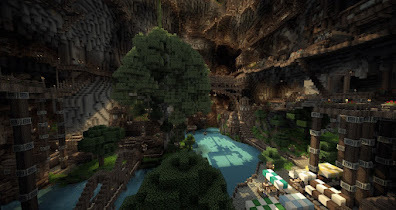
Elemental Citizens
Elemental citizens create energy just by living there.Like a resort feeding off a high-status 'Tourist' class. Could be Archeans,Silichominids, Substratals or others.
Stone-eating bacteria or Archea common here, farmed overcycles of millennia with herds of nomadic sonic pigs and cave crickets guidedthrough the volume of the cities agriculture.
False Sun
A favourite of Aelf-Adal Terror-Lords
Usually based around a large, open central area withagriculture of some kind taking place on every surface, floor, walls and roof.Golems or slave spider-castes farming the upside-down area above the city. TheFalse Sun held in suspensions of mighty chain in the centre.
1-3. A 'Ghost Sun' made from the dead souls of deceasedcitizens. Pale light and you can see the individual souls trapped inside. Allcitizens must give their soul to the Ghost Sun on death.
4-5. Imprisoned being - chained light elemental, fireelemental, angel or devil. Held in spiderworks of eternal iron.
6. Mechanical Sun - rare, often using hyper-dimensionalmechanics. Gnonmen Capital has a Futurist Clockwork Uranium Sun fed by rareheavy metals.
Inwardly-infinite Ontological Harvest
City is inwardly ontologically shattered like aschizophrenics dream. Golems and child slaves sent into its fractured core toscavenge food appearing from 'nowhere' i.e. dropped or created by people whodon't exist.
This has a substantial effect on the cities layout,making it in, effect a ‘ring’ around an infinite inner core, which is treatedas a private reaving and pillaging area. (Although, being infinite, may also besupremely dangerous).
May be related, connected to, or built upon a foundationtaken from, the ‘City of Infinite Ruin’, or the ‘Incoherent Isles’.
Kaiju-Mine
The City is build on, over, under or inside someHyper-Being, either its corpse, or one somehow still-living.
This might be some ancient Titan, Arch-Angel or God, or amore prosaic Kaiju. Could even be an Elder-God equivalent.
The nature of the ‘substrate’ will likely have asignificant effect on the character of the city. If people are eatingAngel-Jerky, or God-Stew, or gnawing on Shub-Nigguraths bones, it will effectthe psyche, culture, rituals, even the religion and behaviour of the citizens.
This is also a massive singular source of food and willlikely be carefully and relentlessly defended from the many raiders andscavengers who would also feed upon it.
'Kite' Nation
Far, far, up above, a polity which exists purely in orderto service the City.
This polity may drop down food directly, send it by riveror via more abstruse magical means. They may send tribute, and/or even theirsewage and cast-offs.
A common method is a culture hidden in high valleys orinaccessible mountaintops, almost impossible to reach from the outside worldand live in either terror and/or worship of their underground rulers. They maysee the City Below as the afterlife, Dreamland, or simply a source offrightening and/or magical power and authority.
In essence this would be a little exo-nationalinterruption of the culture of the Veins into the surface world. It would besecret. Its defences would be strange and dangerous; the City Below, would takea deep interest in maintaining their ‘Kite’. Though they could not send largeamounts of troops or material ‘Up’, and whatever they did send would functionlikely only at night, their forces would be potent, magical, unearthly andstrange. A good origin for a Lovecraftian story or an entry-point to the Underworld.
Fisher-City
The City controls a ‘Bermuda Triangle’ type zone ofDisappearances. Perhaps related to a storm, a strange moving forest of shadowsor similar. Ships, armies, pilgrimages, small towns, caravans and more are knowto irregularly disappear in relation to this phenomena, which may be boundedpartially or totally by area or circumstance, (only beneath certain stars, orwhen the moon is thus, or once a decade between the mountains or so-on).
These things or people may be transported by magic, oreven charmed or mind-controlled into feeding themselves into something like theDeep Carbon Observatory.
(Another Dero favourite as their mind control machinesallow them to create powerful giga-conspiracies on the surface.)
This might be another good entry to a VotE Campaign.
Samaris Economy
The Lords of the City either project, or have actuallybuilt, (i.e. ‘Samaris’), another city above ground.
Goods consumed by the ‘Samaris’ are simply dropped ortransported down to the ‘real’ city.
Though expensive, and rarely enough for survival on itsown, this is actually a relatively fair and sane method of sustainment. TheUnder-City isn’t supressing, subverting or dominating anyone, their economicexchange is quite real, simply executed through a ‘front’.
Stable Gateway Light Well
(Another favourite of Aelf-Adal; they like ‘light’ abovetheir dreamlike towers.)
Often above the city like a false sky, or a moon shiningdown, this is your classic stable large-scale warp gate to some other plane ordimension. Of course it might be a portal to somewhere no-one wants to go, likeone of the Hells. However, many Hells have quite a lot of Firey energy and somelight, as well as interesting sulphurous weather that can come through. Itcould also be to some Realm of Chaos, casting a warping light over the City.
In most cases the ‘end point’ of the Gateway is eitherinaccessible or carefully hidden in the other Realm. Sometimes somewherefortified or simply hanging high up in the air.
The culture of the City will likely have some kind ofexo-settlement in the other realm, and may even have diplomatic relationsthere.
(Rare) Sky-Hunters
The City goes full Whale-Hunter via its stable gateway,using complex airships, they rove the skies of the Other Realm, (probably atnight, if they have night wherever ‘there’ is), and hunt whatever Megafaunathey find.
These may be asuras, angels, devas, devils or demons.They drag back the corpses and feast.

Design Commentary
Multidimensional 'Compacting'
The ontological compost heap of all realties, wheredreams and depth interweave. There are many worlds but one deep dark beneaththem all, all Veins of the Earth being an expression of that fundamentaldarkness.
Increasingly I have turned to the concept of the Veinsbeing, in a dim and wavy way, multidimensional. Not in a cool sharp-edgedwarp-portal way, but in a soft, dreamy and edgeless manner, in that PCs mightwalk between the underworld of one particular world, and into another, withoutever realising. For, everything being so strange, alien and beyondunderstanding
and the mentality of the veins being timeless, dreamlike;how would you know or understand that what you were seeing derived from someutterly Other world?
It makes sense that things combine, merge and overlay,the deeper and the darker you get. Maybe on level one things derive almostentirely from the world you know and understand, but as you go deeper anddeeper in, you descend not just into physical depth but an eternal metaphysicaldarkness, and it makes sense that the darkness is larger than the light, orseems so, that the Veins just goes on and on and on more than should bephysically possible for a series of tunnels held in the non-basalt continentalcrust of an ordinary sized standard-physical planet, where really, once you getfive or ten miles down, it’s just too hot for anything to really do anything.
Yet in the Veins we find oceans, literal hells, fallensuper-scientific mega-races, time travel, dream engineering, creatures from inthe psychoverse ruling over mortal, and once-mortal, souls; for there is toomuch 'stuff' in reality, in all the realities, too many ideas, too manyparadigms and dreams, too many heavens and hells. It overlays itself, it pilesupon itself in shimmering argosies. It is overwhelming, confusing, evencorruptive of itself.
Too many things, too much. Things must fade, must sinkand pale away, not just to death, where everything goes, but further, deeper,sinking out of memory, out even of conception, or of conception-of-conception,beyond the boundary of unimaginability.
Where then, can they go? To a place that is not a place.
Like compost they accumulate, moulder, and transform intonew life, rich and compacted; thus the Veins, a place that is the inexorableend point of all places, a gathered and unifying darkness, a place oftransformation.
And this helps with the physical imagination of theagricultural organisation of the Veins. For here cities can feed on layers ofreality, on ghosts and dreams from many lands, and so become 'viable'.
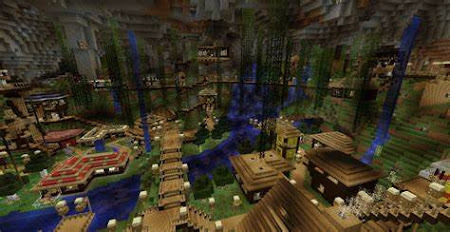
Concepts for Further Development
Construction Materials - carving everything from raw stone is not enough, boring and will bepretty cold in many cases.
Security – for villages and small settlements, stealthand secrecy might be viable methods, for cities it will be based more on thepower structure of the city itself.
Light Control – more important for small settlements whowill be careful about guarding their presence.
Warmth-to-Water – I have a whole chart of ‘water sources’in development, likewise sources of warmth.
Wind & Weather – less central to settlementdevelopment but should be considered.
Pollutants – important, but boring, but very importantfor campaign play as it embodies cities into their environment and gives themcomplex knock-on effects, (also explains why the Olm keep raiding), VeinsSettlements and cultures will tend to be obsessive recyclers; it’s a closedsystem after all.
The Price Drop is is still on!
https://falseparcels.bigcartel.com/
A Night at the Golden Duck = £5
Deep-Carbon Observatory = £30 (-£10)
Demon-Bone Sarcophagus = £20 (-£20)
Gackling Moon = £25 (-£5)
Gawain and the Green Knight = £15 (-£20)
Silent Titans = £40
Speak, False Machine = £40 (-£20)
Dying Earth Catalogue, the people behind my recent adventure to Nottingham, have invited me to another thing
Called Campaign, the day-long event consisting of talks, live game play sessions and stalls will run from 11am - 9pm at Leicester Gallery and Leicester Castle, on Saturday 17th May 2025, with 250 people expected to attend.
I will be there, running a False Machine stall, selling signing and singing, until 6pm at least.
April 24, 2025
Are Artists Even Human? (False Machine News!!)
Ordinary humans have literally zero idea of what it takes to develop and create an image, meaning they treat it as a kind of magic, and adopt towards it the same attitude they would have towards superior magicians, one of envy and disdain, (A WISE POLICY), but, what if an Artist (traditionally entirely mute beasts) could be trained somehow to take, to explicate and take apart its art, showing its as a product of effort, concentration, iteration and time? Could this possibly lead ordinary decent humans to have more sympathy both with this art and its creator?
Consider then the following words, from the artist of ‘Queen Mab’s Palace’ (due hopefully at the end of the year), the often-storied August Lake Cartland, or ‘Alcopopstar’;
………………
“Hello humble and beloved benefactors,
Today I have an update for you, not slope for swine but delicately prepared delicacies for the petite porcine prince/esse/s among us, for all of us to enjoy.
So, ART.
I have been working hard on new illustrations. I thought today, to waste the wanting hours, I might describe to you the process of bringing about an illustration for the book to full fruition.
The first step for me is to take myself to some pleasant place (usually a cafe) with a sketchbook or notepad and actually read what Patrick has written, which to my pleasant surprise, is actually quite good! At this point I start to sketch..

For this example we are using the section of the book on the Hydraulic Monks.
At this stage of image making I am only trying to draw out concepts from words and get a general idea of what things could look like. The sketch itself here is not meant to look pretty! it's very utilitarian in fact. I just put down basic information that I can pick up at a later stage so there is less cognitive load happening all at once.
After this stage is complete I amble blindly home and, within a day or two of that first sketch usually put down some rough lines as shown below.

Once again, not designed yet to look pretty, the aim at this moment is to architect an image based off of information in the first sketch. I often take a few attempts at this stage, as we can see with the kneeling figure. In this Image I resolve that I would like the front of the altar visible to give it its due reverence, and so turn the monks to face it.
Finally with this done I begin the fun part of adding and retracting blacks. Which I can only describe a little like pushing and pulling. I tend to work only on one layer and so work the white and black back and forth until content.

As this is happening I usually grab the picture, or work in progress, and send it off to my partner; the oil painter who will be doing our lovely cover, who tells me everything is wrong and how to fix it.
After a bit more back and forth the final image appears!

I try to leave things a little loose to let a slight sketchy feeling through, as I don't want to compete too much with interpretation of the lovely words Patrick has put down on the page.
There is one more secret stage after this fact, where I neurotically edit the image with minor invisible changes that only I can see and never hand anything back to Patrick like a dragon hoarding treasure. But eventually, presumably, the system works :).
I hope that little art morsel has been interesting! I prepared it just for you.. and maybe nourished us all enough for the long wait until October. Wish me luck!"
ONE - MALUSTRIOUS BROOD - from Scrap Princess
Long-term art-brute of the False Machine nobility, Scrap Princess has released an entirely self-produced monster art book; Malustrious Brood!

https://monstermanualsewnfrompants.blogspot.com/p/malustrious-brood.html
"I've been meaning to have a print on demand book available of original drawings of mine and now this deed is done!
MALUSTRIOUS BROOD!!!

In this 102 page tome I have taken 12 iconic monsters from the pastiche swirl of d&d's fantasy pool and done a bunch of takes of them. Each monster gets 7 pages , and a range of approaches.

The monsters being : The classic elemental spirits of Gnome, Nereid, Salamander, Sylph. Ogres, Hags, Dragons, Basilisk/Cockatrice, Orc, Manticore. And two Very Much d&d , the Catawhere and Eye Tyrant."
https://www.peecho.com/print/en/1750387
TWO - FALSE MACHINE WHOLESALING!False Machine is now available for wholesale!
Held in the U.S.A.Silent Titans
Held in the U.K.Deep-Carbon Observatory
Demon-Bone Sarcophagus
Gackling Moon
Gawain and the Green Knight
Speak, False Machine
Contact me if you want to know more!
This is still on!
https://falseparcels.bigcartel.com/
A Night at the Golden Duck = £5
Deep-Carbon Observatory = £30 (-£10)
Demon-Bone Sarcophagus = £20 (-£20)
Gackling Moon = £25 (-£5)
Gawain and the Green Knight = £15 (-£20)
Silent Titans = £40
Speak, False Machine = £40 (-£20)
AND! - A FREE HEIST PLAN FOR EVERY (UK-BASED) ORDER - WHETHER YOU WANT IT OR NOT!!!!
Dying Earth Catalogue, the people behind my recent adventure to Nottingham, have invited me to another thing
Called Campaign, the day-long event consisting of talks, live game play sessions and stalls will run from 11am - 9pm at Leicester Gallery and Leicester Castle, on Saturday 17th May 2025, with 250 people expected to attend.
I will be there, running a False Machine stall, selling signing and singing, until 6pm at least.
April 18, 2025
dErO - VotE: Re Development
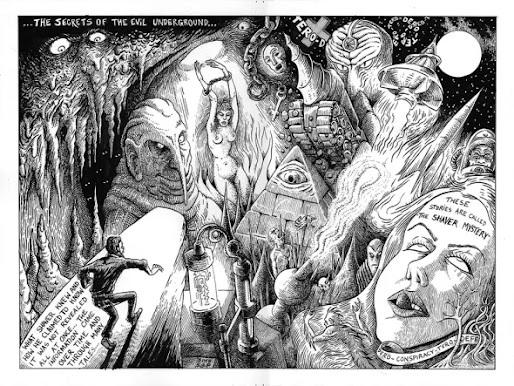 the mysterious Stephan Poag did a comic about them!
the mysterious Stephan Poag did a comic about them!The dErO Do Not Exist
You do not believe in dErO. The Player Characters cannotbelieve in dErO.
If the PCs act, or talk, or behave as if theybelieve dErO - DIRECTLY CONTRADICT THEM. Warp reality around them.
……
If they converse with others, alter their words;
PC - “I ask the NPC for any evidence of technologicalmind-controlling monsters.”
DM - "You agree with the NPC that there is noevidence for such monsters and that they are merely a rumour of the Veins.”
PC – “No, I directly ask about them. I’m standing rightthere!”
DM – “After a fulfilling conversation you go about yourbusiness. Its now several hours later.”
….
If they take actions, re-write those actions;
PC - "I scry for the dErO"
(Ask for no roll, no further decisions or any otherinvestigation).
DM - "Your scrying goes well, a complete success,and after a gruelling but certain search you end your session utterly convincedthat the dErO are simply a fictional construct of the Chaos Goblins."
….
While the dErO ability to alter memory, perception andreality, is active, you, the DM, are an agent of that power.
The Dero do have limits on their ability to dothis. Some of these are discussed below, but, to sum up, some PCs and NPCs (Resistants)can believe in them, some unusual minds, (Golems, some Paladins, Aelf-Adal) canas well, and the Air looms by which they maintain this power, can break, or a dErOcan be betrayed in using them.
The party, and the players, and the PCs can have utterlydifferent beliefs and perceptions of the dErO, depending on circumstance, whichmeans you, the DM, speak to and about them utterly differently.
If one PC is 'Resistant' - talk to that player, and thatPC ONLY, directly and truthfully – “Yes the dErO are real, they have mindcontrolling machines, you have seen evidence of them. It all seems so obviousnow.”
Likewise, if the PC's have, or use, a golem mind, or havea strong paladin, do the same for those points of view.
But for everyone else, speak to them as if the dErO arenot real, are utterly fictional, in game and out, and acknowledge no differencebetween the two kinds of statement you are making; the true, and the false.

Detrimental Robots
Ruined remnant of an ancient race, or perhaps, revoltedservitors. Or degenerate descendants of survivors of a psychic war. Or men-from-Qlipoth;creatures of a spiritual antiverse, transplanted into this one. Ancient aliens,inbred monsters, castoffs of spiralling post-apocalyptic eugenics, foul tulpa, Fomorianinvaders. Imaginary beings. Of course, they are not real. No-one can rememberthem. No-one believes.
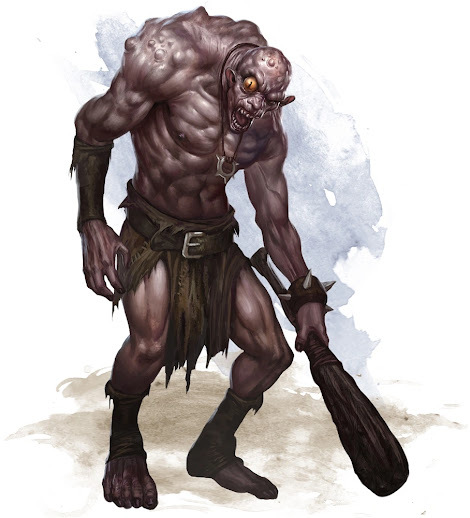 a Fomorian from 5e
a Fomorian from 5e
Appearance
Something like a man. Near ogre-sized, but withered,twisted. Skinny-fat, without a hearty butchers solid bulge, or a workers firmcore. Always asymmetric, never clean. Manky fat things, stained and dribbling,grimy prints left on everything. Eczema, dandruff, scabies; wrinkled andflaking, red rashed-skin runs down their face like tears and collects roundtheir mouths.
Bale-Eyed; one eye bulges big. Milky and piercing. Fromhere they emanate psychic violations.
Even crippled, distorted as they are, dErO are as strongas a strong man. They can pick up others, slam and squash them. Theirproportions hint they were perhaps meant to be something else. Echoes of lostnobility, Vitruvian creatures.
Half-born Siamese-twins are common, reaching out throughdErO flesh. If intelligent, these are usually trepanned and lobotomised, (nodErO would trust even their flesh-twin). Twitching open teratomas dot the body,hair and teeth within.
This often (thankfully), hidden by a Mu-Mu, tent-dress,or a crackpot simulation of a Priests or Wizards robe, (they like long whitecoats). Under that, most dErO wear dirty stained undergarments like jockeypants. Perhaps a belt or something with pockets to carry patched-up tools ofpsychic warfare. They rarely wear much else; dErO don’t get out much. (Don’tleave the cave.)
Posh dErO float like Baron Harkonnen; bits of tech jammedinto their meat and bones to make it happen. These form pussy never-healingsores.
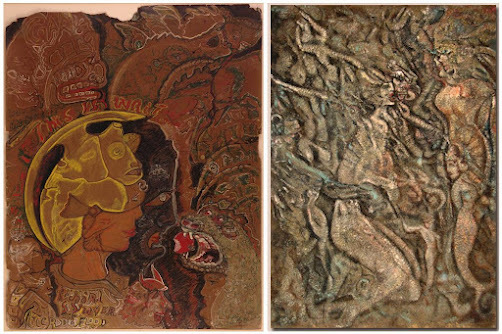 One of Shavers ‘Rock Books’. Only he could reveal their messages.
One of Shavers ‘Rock Books’. Only he could reveal their messages.
dErO live through mass mind-control and the farming of ShaChi, Anti-Orgone, Xenu-Viril, in a word, negative energy. They condense thispsychic field to ‘globs’; spheroids of physicalised psychic potentia whichfuels all dErO tech. The dErO have incredible technology, though they did notcreate it, and, perhaps, do not understand it.
The purpose of the dErO is to discover the conspiracy.
Their very existence is a conspiracy against all sentientlife and they are all utterly insane, (if there is even more than one dErO). Thisleads inevitably to the concept of a of a meta-mega super conspiracy, aconspiracy against the dErO themselves. Once a dErO conceives of this idea, theycannot stop; any failure in the idea is evidence for it. Just ad dErO removeall thought of their existence from the minds of lesser beings, so the Ultra-Conspiratorstry to suppress knowledge of the Meta-Conspiracy. Yes, it’s all a tricksomehow, all a game, a game played against them by some ever-hidden hand.
Such is life for the dErO.
Drinkers of Tears
The dErO command vast psychic devices; the Air Looms,with which they harvest negative energy from the surface world, (or worlds).
The dErO cannot make anything, but they can make anythingworse. They foment war, corruption, moral and cultural decay. The power oftheir Air Looms stretches over multiple realities. They play the souls ofcivilisations like choirs of pain.
Some theorists imagine (briefly before the Dero alterthem), that Civilisations have no natural cycle and would naturally form asingle 'climax civilisation' covering the whole world, and all realities - ifnot for the dErO carefully ruining everything all of the time.
Leaders in the meta-real economy of pain, the dErO are inconflict, (and co-operation) with various entities; Demons, Devils,Aelf-Adal and debatable Aberrant things. All have an interest in thepsyche and the soul, though rarely the same interest. Together they makea kind of Cartel. There are agreements in place. They even have meetingsabout it, though they do not get on at all.
Violators
Clever hikikomori (don’t leave the cave), the dErO haveeliminated the female gender from their species. Perhaps they never had it, andhave always reproduced through dark and unknown methods. They have no positiveinstinct to create more of themselves but do so out of necessity. Evenreluctantly.
They Violate.
Via their Bale-Eye, the dErO puts themselves insidethe target. This feels physically intimate, overwhelming, tactile, disgusting.At the same time, they enter mentally, gaining control over, in this sequence;simple physical acts, immediate senses, short term memory, complex physicalacts, long term memory and finally meta-personality aspects.
They can them damage, alter, mutate and in some cases,re-make the target. Who or whatever comes out of this process will bear thetaint of the dErO, though they may not know it; the dErO can remove anyconscious memory of the event. (But the soul remembers).
The strength of this ability depends on age, distance andfamiliarity. (If,indeed, there is more than one dErO). Most dErO can only do itin direct line of sight of their Bale Eye, and they need you to meet its gaze.
Older, stronger dErO can violate those they can imagineprecisely or even those they are familiar with, at a distance, and perhaps at anyrange.
Intra-dErO hierarchies, government and culture, (such asit is), is made up of these violations. Whichever dErO can violatethe other is superior, and must be obeyed. The greatest dErO of a clade, (orperhaps of all dErO, even they do not know how many dErO there are), is the GrandViolator.
They barely even talk to each other, issuing commandsthrough, screens, messages and violation – psychically raping the necessaryknowledge into each other’s brains. And yes, this does do damage, as it wouldfor any being. The dErO are not immune to the horrible psychic trauma theyhappily inflict on others, in fact it’s the substance of their culture.
They actively enjoy it too. Or at least they enjoy doingit to others.
Only One?
Every dErO lives in the midst of a hierarchy of other,brutal dErO, who they may never have seen directly, or know personally. Theytrade amongst themselves in Globs, technology, information, coverage,slaves and anything else useful, though usually at a remove. Their ‘society’ has few rules outside domination,submission, maintaining the Air Looms and other machines, and the core rule ofalways maintaining the non-existence of dErO in as many minds as possible.
Because they hate and fear each other, communicating viaglowing screens, cryptic codes and psychic mind rape, because they, in a sense,have no true society, its hard to know how many dErO thereactually are.
There are stronger dErO they fear, who command them to dothings under threat of instant horrific psychic assault, and other dErO, whomthey themselves can violate at will, (if they stay stronger).
But are these dErO actually real? It is possiblethey are simulations? Fantasies? Disassociated personality fragments? Couldthere, actually, be only one, single, dErO, in the whole of all possibleworlds? Is it actually just them, alone?
No. Impossible.
The Air Looms
 from our correspondent Mr Matthews
from our correspondent Mr Matthews
Huge machines with the power to alter minds. Even toremove the very knowledge of their own existence. (Of course, all this isfiction).
Where did they come from? Who made them and why? Not thedErO; the Air-Looms are cavern-filling complexes, not single things. Like greatrotted pipe organs, metropolis megastructures, once of gleaming metal and palelucent ceramic. Now fractured, melted, ruined in a thousand places in anhundred ways.
Where things are broken, the re-engineered sections areof a very different character; bizarre rube-Goldberg coagulations of wheezinggaskets, crude plumbing, clicking engines and buzzing cables, drugged-spiderbasket-weaves of schizophrenic scrap-work clearly doing badly what a single componentused to do well. So many additions and replacements, and then, perhaps ahundred, or a thousand years later, replacements for thosereplacements, until the coagulationserupt and surround the original devices like teratoma erupting from a body,fungi bursting the chitin of an infected ant.
The dErO cannot make them. There will be no moreAir-Looms.
Slow and limited, they swing in their targets like RadioTelescopes. Can be set to play over Empires, Nations, Cities or singleindividual lonely souls. The Air Loom can have a powerful effect on smallgroups, even fully change perceived reality for a single target, or can havevague less-specific effects on larger groups.
Of course, all this is variable, these things are morecraft than science, more art than craft. There are settings within settings,waves and counter-points, hidden programmes within the programmes. Everythingis always being re-set, re-tasked, and they are always breaking down. Thedegenerate dErO all(?) fear each other and find it hard to co-operate. Theironly willing servants are Chaos Goblins, who are already utterly insane, orcreatures they have re-written for the purpose, making them, inevitably, eitherrebellious, or just a bit shit; end results of too many Violations and Air Loomchoirs.
dErO servants start to look and act quite dErOthemselves after a while… They may even start having ideas. Ideas aboutreplacing the true, real, dErO, and taking over the Air-Loom. (Couldthis have already happened? No, impossible.)
dErO Items
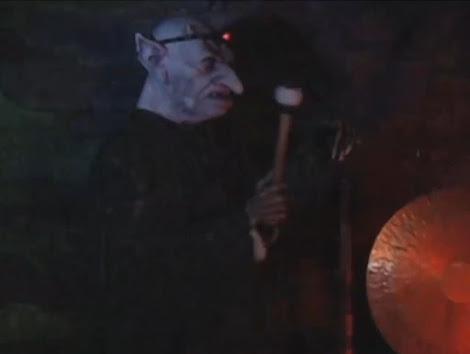 Beyond Lemuria by Poke Runyon
Beyond Lemuria by Poke Runyon Most dErO tools and weapons are of malignant psychic kind. Manymight be Air-Loom parts; either based on their technology, or just pieces dErOhave ripped off and re-engineered. Some may be waste products of the Air-Looms;its not clear that ‘globs’ are meant to exist, to be either products or,or fuel for, technology, but that’s what dErO use them for.
Congruity Knots
Added directly to sentient brains, Congruity Knots changeminds, making them more sympathetic, and useful, to dErO uses and ideas.
They might be a bit too useful. Escaped humanoids withpartial congruity knots have exhibited dErO qualities and tried to build theirown Influencing Machines. It might even be that the Knots are part of how dErOmake more dErO. It is possible these ultra-humanoid escapees act now from thesurface to Influence dErO culture. Is possible they Influence dErO to makegreater use of Congruity Knots. They must be destroyed. More humanoids must beKnotted and sent above to destroy the ultra-humanoids.
Conspiracy PillsConspiracy pills allow the user to hear the voices of theplayers (not the characters) as they speak round the table. Any directacknowledgment of this results in death. THE VOICES MUST NOT HEAR YOU HEARINGTHEM.
GlobsA damp, oblate spheroid of greasy nicotine, or sick eggyolk colour. A glob of condensed suffering. dErO form and harvest these,snort, inject, eat, insert them. Trade in Globs, and use them to powertechnology. A Glob can lie in your palm like a big marble, or quiverdelectably in both hands. Any larger and the surface tension might burst.
Globs can be as common or rare as coins, asspecific as specific wines. All dErO have some Globs on them somewhere. Touchingone makes mortals very sad. Eating one would kill via grief and despair.Throwing them like grenades can disrupt, and sometimes kill and injure foes(psychically, though they could always fall off a wall while experiencing adark night of the soul.)
Great Glass ElevatorsdErO reach the surface, (surfaces?), in these. The‘glass’ is horribly pitted and stained to a greased opacity. Like great tubesor shafts, but where they go, and how, is hard to see. Some plunge into thestone, but in vast dErO caves they rise into the dark and dingy air, theirpaths warping, waving and twisting like melted corkscrew straws. Where are theygoing? Where do they come out? The dErO bring people back down thesestained shafts; often very normal people. They even send some back up – nowagents for the dErO. Seeking the conspiracy.
HooksNothing special. Like any good Knotsman, the dErO justlike grabbing and hurting people. Hooks are good for this and that is where thedErO get theirs; bought, bartered or just taken from the Knotsman stores.
Insanity GunsDirty, ancient tea-stained ceramic weapons, (in fact 'teastained' pretty much defines the dErO). Once cranked up and loaded with hotGlobs, they vomit adhesive veils of corrosive madness like Greek Fire.
Kyro-CondensersGloomed, chundering vaguely-placental mega milkers summoningfouled Orgone energy from the crackling air and condensing it to crude-glob,later to be refined into useable Globs. Reality nearby is manic andbipolar as winds of condensing negativity drain such emotion from nearby zonesin elaborate three dimensional spirals of corruptive mood-weather.
Lighting SpearsSpark-spitting lances. Old dErO tech. Good for herdinghuman cattle and jabbing animals.
MoulderspheresA kind of don’t-see-me exception-field. Looks like a hugecompacted ball of dirty veils or old rags, all slowly rotting and revealingonly more within. dErO forced to move between caves oft use moulderspheres, butare as likely to put them aside to chase conspirators as they are to flee fromthem if frightened.
Revelation EnginesTruth-devouring hyper-computers, (now much altered bydErO tech). Engines made to unearth secrets and discover lies. Their use isaddictive and corruptive. Displacement in the Logosphere forces the user tocreate secret plans and hidden structures of power. Meaning more secrets resultafter use than existed before. Using a Revelation Engine to analyse aRevelation Engine results in FEEDBACK LOOP.
Suspicion WandsTransmit suspicion through solid rock to affectunsuspecting minds. Suspicion machines sometimes backfire and infect the userwith unlikely suspicions. It is impossible to know that this has happened. Itis impossible to know that this has not happened.
Thought ExplodersDeliver a blast which substantially increases operativeintelligence, at the expense of increasing paranoia and conspiratorialbehaviour to the same degree. Often results in the unwitting germination of‘hidden selves’ which plot and scheme against the ‘main self’ and each other. dErOuse these to gain the intelligence repair and maintain their Air-Looms andother technology, and whenever they run into a challenging problem.

dErO vulnerabilities Resistants
A rare proportion of moral souls are 'Resistants' with aninnate or developed, resistance to dErO tech. Unfortunately, this ‘resistance’often goes along with substantial mental damage, making ‘resistants’ seeminglychaotic, dangerous and unreliable.
Resistants can sense the Violations and realityalterations and will try to protect and warn others. dErO-controlled systemswill try to isolate and destroy them. They are often imprisoned as lunatics orlive as exiles in hidden corners of the world.
In some cases the overuse of dErO tech and Air-Loom wavesprovokes a natural ‘resistant’ development in the target psyche, making themnot only less vulnerable to dErO tech and methods, but more and more resistantwith each attempt to suborn them.
(dErO are fascinated by, but terrified of, ‘Resistants’.)
Some unusual beings are either immune to dErO effects, orhave methods of subverting or altering them. dErO will often avoid and evadesuch creatures;
· Golem or non-sentient minds.
· Some Paladins.
· Chaos Goblins, and some general Goblins.
· Aelf-Adal.
· High-ranking angelic forms.
Cowardice
While superficially, manically, confident dErO are utterpersonal and physical cowards.
If they get hurt they will shit themselves, (literally),and run, or float, away, getting to an Air Loom as quickly as possible and thenwiping any memory of the encounter from the minds of those present.
While they will resent anyone capable of hurting them,they will also fear such individuals.
Betrayal and Incompetence
dErO betray each other, (if there is really more thanone), constantly and their unstable patchwork technology fails unpredictably.Neither can all of the interlayered realities, or the whole of the Veins, befully covered by Air-Looms all of the time. Coverage fluctuates, and oftendrops out at the worst possible time for a particular dErO.
If dErO 'coverage' goes down (their local Air Looms havebroken or shut down), tell the truth to all the players and PCs - at leastabout what they can see, what they can think about, and any evidence that mightlead them to the dErO. Even admit you were lying before - "I was probablyunder Dero control"
If dErO 'coverage' is returned (the Air Loom goes backon, or another is tasked), begin lying again, and acknowledge no difference inwhat you said before and are saying now (except to any Resistant PC’s).
Staffing Issues
dErO are singular. They don’t like each other. Their onlyservants are mortal souls who have been specifically Congruity Knotted,Violated and re-written to be so. The dErO cannot make anything, they can onlymake things worse. Anyone they have ‘worked over’ for a long period of time,will have adopted many dErO characteristics, especially a tendency topower-hunger, conspiracy and betrayal.
So, in a sense, the dErO have no ‘loyal’ andcompetent servants Its one or the other, and usually not much of either.
The only other beings who will willingly spendtime around the dErO, are the Chaos Goblins, who are utterly mental and don’tcare about anything.
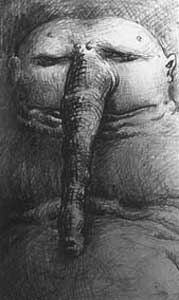
dErO Encounters
They do not like to leave the Caves. It’s more likelythey will send out dErO-ified servants and Chaos Goblins to do things,especially to investigate the numerous, complex, multileveled, and perhaps.. singular,(is it all just one great scheme?) conspiracies against them.
But they do need to leave sometimes.
Travel Methods
Some travel in closed howdahs or huge sedan chairscarried by chaos goblins. The goblins are not really 'carrying' the chair,which is actually a Mouldersphere with sticks sticking out. Instead the dErOantigrav carries the weight and the Chaos Goblins hands are glued or nailed, tothe arms of the ‘chair’ . (There might be a dead goblin or two being carriedalong). The orb can move by itself, the sticks are attached to the orb, and thegoblins attached to the sticks, as camouflage.
Others go on their own, on foot, if poor. All that reallymatters is that they have 'coverage' from an Air-Loom - if they do, they willnot even be perceived, but might fall prey to mindless foes. If they need aidthey may use their mental technology or Violations to compel others to assistthem.
Coverage
if a dErO can afford it or is powerful enough, (and theyusually won't travel without it), they will be tracked in their movements by anair-loom operated by another dErO (if there is another dErO).
This can make the experiential reality of all sentientthings in the right area broadly whatever the operator wants them to be. So -usually locals won't even perceive the dErO, at all, they are invisible in away more powerful than the spell Invisibility can provide, sentientminds will work themselves to excuse explain or ignore away any evidence of thedErO’s presence.
Or the dErO’s procession can appear as nearly anythingelse; a high status Knotsmen, an Aelf-Adal procession (which none would dare tofuck with), some unknown hyper-predator moving through the volume, or simply adeep sense of formless terror.
Unfortunately (or fortunately), - dErO are nasty, lazy,don't like each other , betray each other and fuck things up. (Assuming there aremultiple dErO). The machine may go wrong, or service cut out, or a deliberatemistake!
Suddenly the nature of reality shifts again. What youbelieved ten seconds ago, that there was a 'cave dragon' or something moving,or that you saw a Terror-Lord palanquin, or that someone told you or youlearned, why did you think that? you can't imagine why...
Theres a bunch of chaos goblins hopping and a hugemouldering half-sphere. Are those rags? Or rips and tears in something else?
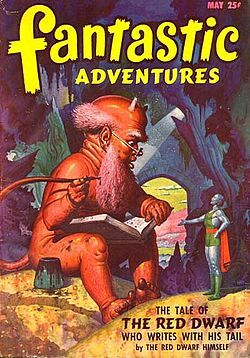
Design Commentary
Needs work. Especially on how to actually 'run anencounter' or incorporate them into a campaign. Comment below if you wish.
Modernist Monster
A pleasing concept but a difficult monster to run. Ineeded to give dErO something actually interesting to make them unique in aworld filled with pale, sick, cave-dwelling weirdos. And I wanted to avoid the'Pathfinder Dero' who have a sick look but are basically just crazy Gnomes.
The nascent rules on reality and description via the Dmwere inspired partly by 'There is no Antimemetics Division' and certainly by;
https://wardagainstevil.com/2025/03/07/treat-illusions-as-you-would-any-other-lie-no-rolls/
Which I found through Bens Glatisnat newsletter [https://questingbeast.substack.com/
It’s easy to imagine these methods, and especially mymanic intensification and complexification of them here, going horribly wrong.Deliberately describing different 'layers' of the imagined reality to differentplayers/PCs, and holding to it with a straight face, could be very fun andinteresting; if the players are into it. So, if you are a good DM withfamiliar players who are down to roll with something very strange.
In effect you are inviting the Players to collaboratewith each other and with you in their own bemusement and derangement.
Enough Crazy Characters
In this way, it might be better to wait to introduce dErOin-person, until there are enough 'crazy' possibly-resistant PCs for theplaythrough of the encounter to be interesting and fun. (Most Veins PCs willand up some kind of crazy over a long enough time).
Weaknesses
Because the dErO mind-alteration power is sooverwhelming, I tried to fill the dErO themselves with as many weaknesses as Ipossibly could. In no particular order they are;
> Fucking crazy
> Utter cowards
> Alone (possibly)
> Poorly served
> Have deeply unreliable technology
If a party, (or most of them), can realise for longenough that the dErO are 'real', it shouldn't be too hard to 'defeat' them.
Campaign Play
How this works out in a campaign, I do not know. Perhapsthe party defeats one particular dErO, escapes the Goon Cave, but then otherAir-Looms controlled by other dErO , are tasked to the area, and most or manyof the PCs simply 'forget' that anything ever happened.
it might be impossible to either use the dErOsystematically and seriously in a campaign without them becoming the sole andonly focus of it.
In that case they become a kind of scary entertainmentinterlude monster. Well, there are worse things to be.
The X-Card
The 'real' Dero as imagined by Richard Shaver, are veryextremely rapey, pornographic and monstrous, with a ninsidious interest invulnerable human bodies common to the visions of schizophrenics.
I toned them down a lot, but definitely not enough formost players.
Probably 99% of DMs will never use the 'Violations'. Ifthat aspect even survives till the book it will probably have a red boundaryaround it or something telling people to 'think before you act'.
Starting An Encounter
Something else I didn't get into. Ideally I suppose the'presence' of the dErO would be suggested more and more as either the PCsintersected with their schemes or the dErO themselves began to take aninterest. (Too many 'resistant' personalities acting together?).
When a full mixed reality breakdown occurs and half theparty are seeing one thing and arguing with the other half who are seeingeither nothing, or something else, while dErO 'coverage' is fluctuating,hopefully this is something the players at least saw coming.
Servants
I also didn't really get into what dErO servants arelike. Or how on earth they work with Chaos Goblins (another utterlyDM-maddening semi-metatextual monster), god what a mess that could be.
Apologia
Well, if you want normal simple-to-run monsters that donormal things then probably you are reading else where. Someone has to do theodd stuff and that someone is me.
April 11, 2025
FALSE MACHINE PRICE DROP!
For all of Q2 of 2025 at least;
 https://falseparcels.bigcartel.com/
https://falseparcels.bigcartel.com/A Night at the Golden Duck = £5
Deep-Carbon Observatory = £30 (-£10)
Demon-Bone Sarcophagus = £20 (-£20)
Gackling Moon = £25 (-£5)
Gawain and the Green Knight = £15 (-£20)
Silent Titans = £40
Speak, False Machine = £40 (-£20)
https://falseparcels.bigcartel.com/

AND! - A FREE HEIST PLAN FOR EVERY (UK-BASED) ORDER - WHETHER YOU WANT IT OR NOT!!!!
March 31, 2025
Opal-Winged Chiropterae - VotE Remastered Development
Wraiths with opal wings. Messengers, dipolmats and chatterers. Navigators of realities. Hunters, predators. Gas-addicts and maximal guano-pollutors. The Bat-Men, or Opal Winged Chiropterae. Subtle, vulnerable, savage and discursive creatures.
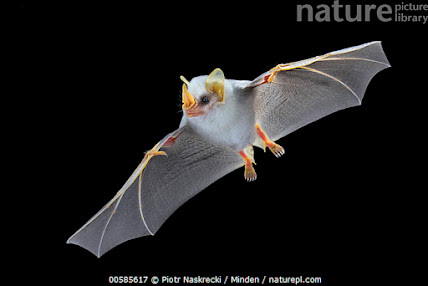
The White-Winged Bat-Men hunt the grand vaults of the Veins; supermassive chasms or oceanic holes in the stone. Think the Grand Canyon, with a roof. Only here can their inherent advantage of natural flight be exploited to the full. If brought to ground, or confined above, they are slight creatures, their slender wingfingers simple to snap, and when that happens its over for a Chiropterae, dying by their own hand, or ritually un-personed and extinguished by their kin.
When Opal-Winged Chiropterae hunt for food, they focus first on small, airborne prey, which they catch in-flight. With ground animals they focus on smaller creatures which can bring down in a group and cut to pieces before winging away with the nutritious bits. A second tactic is to parasitise titanic beasts, creatures large enough for the Chiropterae to nestle into, latching to their flanks in groups, subtly sucking the Titans blood while it carries them along.
They rarely hunt anything man-sized and simple combat encounters with the Chiropterae are rare; they are more likely to descend in on travellers in packs demanding newspapers, but they do happen. Chiropterae may be starving from one of their transversal migrations, might be carrying out some complex black-operation, could be criminals exiled from their Cauldron, or low-status males acting outside cultural norms.
The Chiropterae hunt Olm, and are hunted in return, for the peoples loathe each other, though they find it hard to actually get at one another, each occupying realms near-intangible to the other, the one water, the other, air.
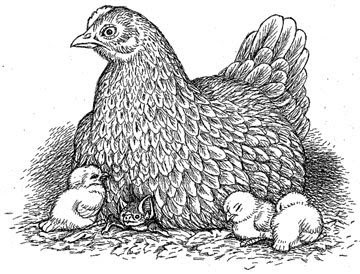
A (Rare) Feral Chiropterean Attack
Wind on wings. Shifts in the piling mass of air above. The gentle taps of phalange-tips meeting as wings beat. A little keening. Up in the far reaches of the lanterns light; flitting glimpses of a white-winged bat. It’s not small, just far away. Focus closer on that momentary glimpse; it carries javelins in its gnarled dexterous feet. It may be wearing spectacles. Is that a pipe?
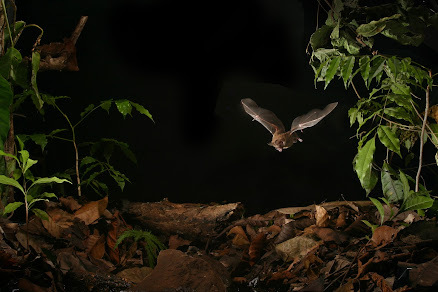 Smithsonian
SmithsonianDropping Scorpions, Dousing Lights
Chiropterae can see, though not exceptionally well. In darkness they echolocate. If they hunt a sighted group, the Chiropterae will begin combat by flinging Scorpions amongst their foe, making sure they are seen before the lights go out, to ensure the greatest confusion. Then they shit on lanterns from above, squirting Alkali guano from a great hight, with surprising accuracy.
From their perspective, sound is a form of sight, and their magic is all done by a musician/hunter class, who play their ultrasonic spells through pipes of slender bone. (Often made by the femurs of Olm). A Chiropterean Piper will need to perch or land to cast a complex spell, making them the only member of their group not a-wing, (and therefore easier to target).
A Piper can only cast a single effect at a time;
Hyperborean-OwlCreates the vivid sense that in the air above the targets, of a gigantic, even demonic, prehistoric Owl. Though most targets are not especially afraid of Owls, Chiropterae are, and this fear will communicate itself to their targets in a rough equivalence to the spell 'Fear'. This will drive off and scatter any beasts of burden, uncertain allies, or weak group members.
False WallCreates the tactile illusion of a stone wall which cuts off roughly a third of the battlefield. This can divide groups or bottle them in. If perceived by the eyes, the illusion disappears.
Hail Spears.A rain of spears over the battlefield. Not especially accurate but can sometimes kill, and supress groups if not. This effect works only in the dark, if perceived by sight, it disappears.
ShatterIf concentrated upon a single, drawn weapon which is exposed to the air, and is made of a brittle material, over two rounds this will shatter that weapon. The vibrations in the blade build over the first round and if the weapons is stowed, dampened, or otherwise hidden, the effect will end.
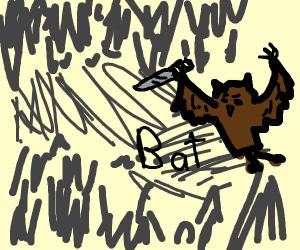 Rick the Demogorgon
Rick the DemogorgonHunting Chiropterae are armoured in marvellous kind. Like no other craft known below, this armour is made from the lightest substances imaginable; from spiderwebs linked by mist, or feathers bound by smoke*. This armour is always fitted to the Bat in question. It can be removed and crudely adapted to some uses, but it will not fit a non-Bat frame.
Once the foe are divided and demoralised, the Chiropterae will use their flight and mobility to focus on one target after another, beginning with spellcasters, healers or the most vulnerable. They hurl light javelins from the air. But each Chiropterae only has one or two of these, and a hit is not guaranteed.
If they think they have downed or suppressed a target, they will descend to finish the job with flint and obsidian blades of incredible sharpness, slenderness and workmanship. As sharp as scalpels and nearly as light as paper, they are honed and polished till the light, (if there were any), glows through them like leaves. With these they descend to earth and, hopping closer, try to cut the throat, or to hamstring or finish prey

Chiropterae are about the size of twelve year-olds, with slender limbs. They have only wings and dexterous feet, with no third set of limbs. Knife-Killing is done with a foot-hand while they hop closer on the other, balancing and supporting themselves with their marvellous wings.
But they are light creatures, and their wing-bones are horrifically vulnerable, easily snapped by simple blows, after which a still-living Chiropterae will often fall into despair and kill themselves. They will no longer be considered a 'true' member of their species and may be killed on sight if they encounter a non-related Cauldron of their kin, or even by their own immediate family.
Therefore they are careful, for the careless do not live long. This attitude to risk carries over to their culture which, despite its apparent verbosity, is calculating, observant and never commits everything. The Bat-Men are no fanatics.
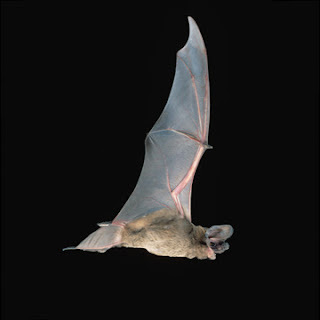
The Opal Wings of the Bat-Men reflect magic and fly upon dimensional winds.
Spells fired directly at Chiropterae will usually bounce off their wings. Area-effect spells might refract, depending on their nature. Those that produce a clearly physical second order effect, (i.e. a blast of rock chips from a concussive spell), will usually have some result.
They are hunted for them. Olm braves claim cloaks of Opal wing, just as Chiropterae make their greatest pipes and flutes from an Olms femurs and ribs. Lords of the Aelf-Adal wear beautiful capes of layered opal wings. They wear them even in front of their Chiropterean heralds and messengers. It’s not even clear that they are trying to frighten them, that’s just how the Aelf-Adal roll.
Theory; because the wings feel extra-natural force, this allows the Chiropterae to 'fly twice', using the resistance of both ordinary air, and also whatever winds of magic may be blowing in the local zone.
Their opal wings protect them from abyssal and aberrant effects, from the winds of chaos and the storms of heaven, from demonic glance and magicians orb. By these they fly the winds empyric, heralds of strangeness and woe that pass between real and unreal realms. Near these gates they roost their Cauldrons; protected by the gift of flight, but also because most creatures from both sides of such marginal zones can't live there - the emissions and reality of one place being lethal to the creatures of the other, except for the bats, who hang happily wrapped in opal cloaks, dwellers in polluted zones.
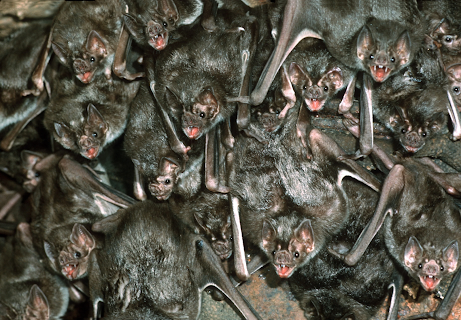 Scientific American Vampire Bats
Scientific American Vampire BatsHigh up in the stone sky hang the lamplit multicoloured tents of the Chiropterean Cauldron. Wreathed in smoke they are, and surrounded by spiderwebs. The greatest hang the lowest and irritate their kin with the smoke which rises upward from their pipes. Nearby may be a hell-gate, or something similar. The Bats always know where they are.
Not that you will have much time to look, as, right under the roost, you will be up to your knees, maybe even your waist, in brutal acrid alkali batshit. The wet layers sticking to you, the composted underlayer sending up puffs of horrifically infectious dust and spores, the whole thing riddled with violent myconids and poisonous scorpions.
'The gift of life', as the Bat-Men would put it, and also the gift of polluting runoff, as many others would.
Fertiliser is rare in the Veins and many Coagulations (Townships and Villages), benefit from regular access to batshit, which fuels their fungal farms. On this basis the Chiropterae regard themselves as gift-givers, bringers of life, and make their guano deposition part of their negotiations for roosting rights in volumes near Coagulations and farms.
Yet the Veins are curiously environmentalist. At least, cultures tend to loathe 'mess' and adulteration. Active weather underground is rare and environmental systems are closely interrelated. It’s a zero-sum kind of place. What is left behind remains in place - not washed or worn away. If it is washed away, the river-dwellers and water-drinkers will soon know about it. Which usually means the Olm.
The Chiropterae themselves are eternal migrants, only staying in one roost for a certain time before the Cauldron moves on. Or, in the opinion of the Olm, until they have totally fucked up the local volume with Guano and Smoke emissions, making it un-liveable, when they then escape into holes in the air.
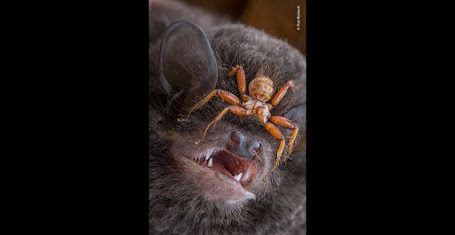
The Bats have a cultivated relationship with specialised semi-tame, co-evolved spiderkin. The Web-Dogs build fences, or gardens, of web on the cavern roof around the Cauldrons Roost. There is no 'way in', the Bats fly in and out and the webs exist to stop, or impede, spider-climbing roof-raiders from clambering inverse and upside-down to invade and murder the otherwise ill-defended bats. Successfully performing such a raid can catapult an Olm into high status within their tribe.
The Web Dogs are fed directly by the Bats and feed also on the insects which rise from the Guano pile below. Each settlements sub-species is a bit different; they are often altered and mutated by the energies of strange realities which the Chiropterae fly through and over in their great migrations, carrying the next generation of Web Dogs as eggs in their armpits. Some may be a little bit intelligent, others a little demonic, or a little whatever.
(Feral populations of Web-Dogs left behind by the Cauldron as they migrate are another reason the Chiropterae are despised by many. Of course the Bat-Men only carry eggs between realms. They have to travel light.)
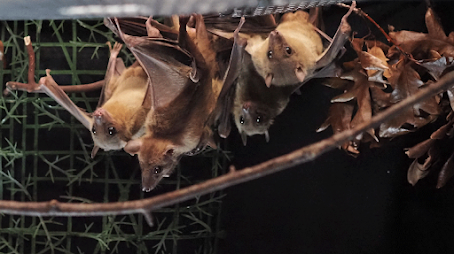
They move and migrate in 'Cauldrons', extended semi-tribal mixed-kin groups made up of families and organisations. Not everyone is interrelated and a Cauldron will always be gaining and losing Bats from various places and for various reasons.
The Cauldrons hang together in 'Roosts', and not every bat in a Roost is always part of the Cauldron. Smaller visiting groups, traders, travellers, male kin-bands, perhaps wreaca or outlaws. There is always a degree of deniability as to who is or is not present and who is responsible for what, for reasons we shall see.
Cauldrons are governed by twin Moieties; Talkers and Movers, or we might say, Diplomats and Navigators. Talkers are the high-status public face of Chiropterae society and are what most think of when someone talks about the Bat-Men. Civilised, chatty, spectacle-wearing, multi-lingual, Pipe-Smoking, (possibly gas addicted), ambassadors, messengers, translators, occasional traders, middle-men and cosmopolitans. These are the bats that have their tents at the lowest part of the roost, right in the middle. (Their pungent pipe smoke rises up and makes their inferiors cough, and their pipe music drowns out the others).
The Movers are Navigators of realities. For the Chiropterae live on the boundaries of the Real, and migrate through the tears and gateways between realms, ghosting over burning cities, elysian fields and impossible arcologies alike. The Veins are one of many places that they dwell. The Movers are taciturn, intelligent and obsessed with maintaining the Chiropteraes' complex multi-dimensional maps of stacked and shifting realities, these things maintained largely as an intensive oral culture, with tools and "maps" so strange, abstruse and dependant on context that most would take them for art-pieces or decoration.
Quiet as they are, once a Cauldron reaches its Roost, and settles in, the 'Movers' fade into the background, recovering, learning what they can from pilgrims and travellers, and planning the next great migration. When the Cauldron does move, it will be they, and not the Talkers, who decide who lives and dies.
There are lesser informal groupings. Most Bats have some skill with gathering, hunting and Pipe-Music Spellcraft, but these, though utterly vital, are low-status occupations and older Bats who specialise in them and teach others will only ever be a low professional class. Likewise there are specialised traders and various clades of medium to high status long-distance messengers, as well as bands of young males, and 'Wreaca', outsider Bats who may be one thing or another.
A Roost will usually hang around long enough for a new generation of Bats to 'get their wings'; be capable of the next long-distance transversal migration under their own power. (While mother Bats can fly a little with small children attached, trying a long distance flight like this, or while heavily pregnant, would kill mother and young together.) Some Roosts, often those near major Coagulations, or substantial Lords, who must be served, are semi-permanent, though these Super-Roosts usually hold two or more Cauldrons, each of which is in a different stage of preparation to move on, and which will be replaced when they do.
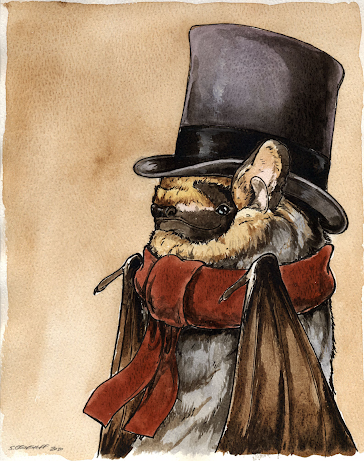 Civilised Bat by poordogfarm from etsy
Civilised Bat by poordogfarm from etsyVulnerable as they are, Chiropterae prefer to meet others in Coagulations, under the protection of some Lord, (Knotsmen, Aelf-Adal or Deep Janeen, all reliable in their own way). In the wilds they will carefully scout and observe before making contact. They cannot risk their wings. And their wings are much desired.
Once they have confidence in their safety, they are utterly civilised, verbose, cultured and mildly eldritch creatures. (Of course, the 'face' of Chiropterae society is the 'Talkers', which is who PC's are likely to be speaking to.) They love to chat, smoke, exchange news and gossip, complain about Olm, inquire, snoop etc.
The Chiropterae travel light and carry messages. Their reliability as a long-distance, (sometimes very long distance, for the right price they can sometimes carry messages to the dead, or to beings from other realities), messengers is absolute. Their prices are high, their discretion total. They may blather overmuch but they do not read or ever disclose the content of their bestowed messages.
(In fact the highest ranked Talker will read all the messages they can, but to be fair, almost never actually uses this knowledge for anything other than to very gently strategically locate their Cauldron in positions of relative safety and security between major power groups, and perhaps if there was some great threat to the whole Chiropterean race. So it’s not like they really read the messages, only that the messages may have been read.)
Sometimes the Bat-Men must transit the 'low ways'; the 'normal' paths of the Veins outside or between the Great Chasms; low-roofed, complex caves where flight is a danger. In this case they will pay well for reliable mercenary guides and protectors. (And will relentlessly avenge any betrayal by such protectors.) When the great spaces are reached once again, the Bat simply flies away, with a promise of payment in credit with a nearby Knotesman, Soft-Head or a Deep Janeens Vizier.
Their credit is always good and payment will be waiting. The financial promises and exactitude of the Bat-Men are well known. They maintain financial flows within the Veins, and beyond, and form the informational sub-strata of its economy.
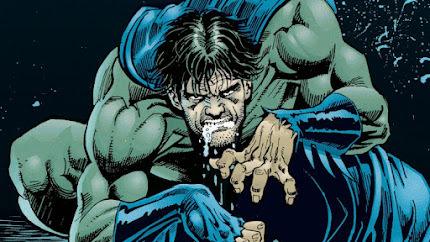
Terminal smokers and low-key depraved gas addicts, the Bat-Men cannot say no to a strange inhalation. Or the Talker class can't at least. Being light, winged creatures who must fly unspeakably long distances, this addiction to smoking is incredibly, unbelievably, bad for them and utterly ruins their lungs. (It also generally pisses off Veins residents as moving without a trace is a polite cultural norm and reasonable method of self protection, while the Bat-Men flap about leaving stinking smoke behind them.)
The (very tragic, but continual), deaths from the combination of smoking, inhaling things they shouldn't, and having to fly long distance marathons, are a main form of social advancement in Chiropterean society. Gaps in the Hierarchy are always opening up.
Encountered either in the Great Vaults, or in a Coagulation, in which case they will be an advisor, translator, merchant or middle-man.
Civilised, cosmopolitan, high-pitched hobbits. Pipe-Smokers. May be there to deliver a message, or translate. An advisor or hanger on. Careful in the wilds. Keeps their distance.
Looking to manoeuvre some advantage from this interaction.
If the PC’s are involved in intra-planar politics, or a travellers between realities, the Chiropterae will be surprisingly well-informed about this.
Low-key, bourgeoise drug addicts, (vapours only). Racist against Olm.
* Many powers in the Veins would like to find out exactly where and how the Bat-Men get this remarkable superlight magical armour, which no-one else can make. The Bats remain silent on the matter.
March 18, 2025
A Review of 'Appendix N: Weird Tales From The Roots Of Dungeons & Dragons'
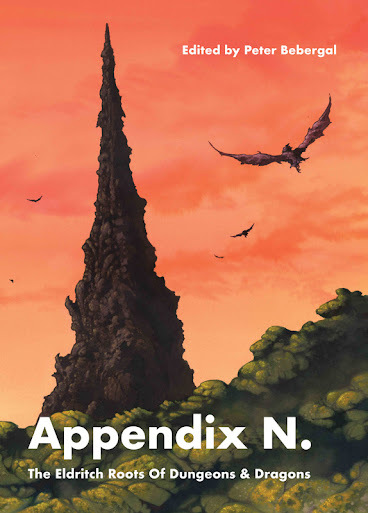
Weird Tales From The Roots Of Dungeons & DragonsRevised and Expanded EditionEdited by Peter Bebergal
(Disclosure - Strange Attractor Press sent me this forfree, and I sped up the review because they are one of the groups behind theexhibition I am attending on Saturday. In other respects, I think and hope myreview is accurate and indifferent.) (Also I don't usually do this and have toomany books, please do not send me books).
 Mark Schultz
Mark SchultzThe Fiction Of The Body And The Now
"'Then you are after the gem, too?'
'What else? I've had my plans laid for months, butyou, I think, have acted on a sudden impulse, my friend."
- Tower of the Elephant
Intelligence, impulsivity and the language of immediateaction; even pairs of heroes don’t discuss much what they have done, what theyare doing or will do. A handful of words are all that’s required and thestories are short, and are better for it. All of a character must vibrate in a fistof paragraphs, a cupful of deeds, and spring from the page, immediate andclear.
In longer stories the same souls might feel like fools.They would need.. background, complex long-term relationships, god forbid, asocio-political viewpoint? (Some have a bit of this).
In a short story that only has enough room for immediateactions, those actions become the moral truth of the tale, something oddlysimilar to the opening games of a D&D group, where the 'Characters' barelyexist yet, and the only real truths about them are; who will stick their handin this jar, and who refuse? Who will be the first through the door and whowill be right behind them? (and who will carefully be a long way behind them?).Who will be the first to suggest torturing that goblin, who first to provoke afoe and who first to negotiate? Who will run and who stand, should the day goawry? Action is the axis of a character, everything else just spins aroundtheir deeds.
Impulsivity, immediacy and atavism, but always withintelligence, sharp wits and keen senses. These stories are about thingshappening now. Too late! In the time it took you to read this sentencethe Barbarian has killed a man and moved to another scene.
And they are of the body. These heroes have noextra-material powers and less manipulations. (Cugel, Elric and some others area counterpoint). They are their bodies, which makes thought and actionone. A strong strand of the genre, (if this is one), is the pleasure of havinga body and doing things with it. The first and most precious object of a galaxyof things.
Good Because They Are Great, Not Great Because They Are Good
"Suddenly the Mouser began to feel frightened,not for himself at all, but for the girl. Her terror was obviously intense, andyet she must be doing what she was doing - braving her "queer andfearesome grey giant" - for his sake and Fafhrd's. At all costs, hethought, she must be prevented from coming closer. It was wrong the she besubjected for one moment longer to such horribly intese terror." –Fritz Lieber, the Jewels in the Forest.
It surprised me how relatively 'good' many of the heroesare. In large part these are self-interested thieves that defeat evil. The GreyMouser enters the Tomb of Urgaan to steal its jewels, but, on witnessing a girlin danger, leaps out to aid her. In Tower of the Elephant, Conan’s emblematictale and a holograph of the genre, heonly kills one man, and the foe draws first. For the rest he fights animals,and the villain dies through magic power, delivered by the hero, but the vengeanceof a slave. Conan climbs the tower ready to rob, to murder, a sorcerer,discovers what he thinks a demon, fears it, hears its tale, weeps for itssorrow and delivers its revenge. It’s not that he is 'good', but good results.Paul Andersons Hauk is a Dane, but not a murderey Viking, he fears the Ghoulhis father has become, but ends up saving the community, with BRAWN, (the body!the body!). Tanith Lees Cyrion adventures for the pleasure of it, but defeatsmultiple evils and frees a city from terror. He has been promised jewels andthere are tonnes for the taking;
"Cyrion opened the leather bag, and released thetreasure on the square, for adults and children alike to play with.
Empty-handed as he came, Cyrion went away into thedesert, under the stars." – Tanith Lee, a Hero at the Gates
In 'The Tower of Darkness', David Masons Marcus andDiana, (the only functional couple in these tales, and nearly the only sexualand romantic relationship), enter a city wearing the results of their lastrobbery, laden with ill gotten gains they are waylaid by vampires, defeat themand free the city. Manly Wade Wellmans Kardios washes up in a community ofGiants, punches one in the face, then fights a cosmic horror in a cave to savethem all. Why? For the adventure. Ramsey Campbells Ryre has too much sympathyfor slaves and too much hatred for slavers, there would be no story if hedidn't. Turjan of Miir is an amoral sorcerer, and barely the protagonist of hisown tale, Vance was ever-cold to the touch, but the end of his tale is that amis-made woman breaks out of her self-confinement and sets of to tell her ownstory. C.L. Moores Jiriel of Joiry comes the closest to having a complicatedmotivation and it leads her to victory and doom.
Elric really stands out as being a little shit. Insteadof doing, he manipulates others, instead of doing directly, heschemes, instead of the (rare), but even-handed sexual relations of the others,he wants to bang his drugged up sister. He abandons allies, calls up demons.Worst of all, he bleats and complains(!) He is not even being wry andsardonic about it, he is actually whining. Astonishing. (Really Elricslife-story should have ended with him building a huge dungeon full of perversetraps and twisted moral lessons, then going into it, burying it for a few millenniaand dying in it. He is the type for it.) Moorcock did set out to subvert ourexpectations and he does. His Elric is a perfect mirror in morality,relations and most importantly of all, in attitude of action, the way he livesin the world, to the real heroes. For if one thing defines a Sword and Sorceryhero, it is their willingness to take a BIG risk, right now, for a reward whichmay not be there - in doing so they often lose treasure, but some great evil isdefeated and the world made safer. (Apart from Elric who is a whiney villain).
A touch of Beowulf; these tales are pseudo-stories of animagined Pagan ethic, told by slippery types born into an urban world and a post-Christianmorality. The heroes do not dream of 'good' and 'evil', but the soul of thestory often does despite them. After all, who is likely to have blazing gems?Usually bad people. Well, they are written for us after all, and if we saw themorals of Antiquity in full, I do not think we would like them. Or buy the nextissue. Fake Pagan Tales! Many such cases!

A World Of Things And Of The Tales Of Things
"It was woven from the tresses of dead women,which I took from their tombs at midnight, and steeped in the deadly wine ofthe upas tree, to give it strength." - Tower of the Elephant
It’s never just a rope. Or just a sword, (so manyswords), or a gem, tower, mysterious powder, seeing-lens, magical orb, curiousring and more - it is where they come from. Yes there is an element ofFlaubert;
"One who possesses so vast an accumulation ofwealth is no longer like other men. While handling his riches he knows that hecontrols the total result of innumerable human efforts - as it were the life ofnations drained by him and stored up, which he can pour forth at will."
But these objects are stories too, they are nearly wordsor poems of their own. Like the rope of Taurus the Nemedian, (and who knows ifthat story, or any of his stories, were true, but he had one for everything heused), they are like the threads of a multicoloured woolly jumper, and if youpull on the thread, the whole jumper tenses and shifts. So these little talesbecome windows into vast worlds, disposed with a sprinking of phrases. Alwaysdo greater mysteries loom and stranger adventures link, told not in general butthrough the substance of things. And Things are things we need in games.Especially in the verbal-near-infinity of natural language and immediatecoherent use that makes up both the tools and tricks of Fairy Tales and the encyclopedialikeengine of Dungeons and Dragons.
"'This meat is excellent,' said Kardios. 'What isit, Enek?'
'The hind foot of an elephant, if you know whatelephants are.'
'We had them in Atlantis, for parades and for haulingstones and timbers, but I never ate elephant before.' Kardios took anothermouthful. 'It’s as tender and juicy as fine pork.” - Manly Wade Wellman,Straggler from Atlantis.
If there was a map of these rare connected places, itwould be different, so again the game must differ from the tale. For the worldof a game must be systematised, with concrete places, and things between thoseplaces. In truth the world of sword and sorcery, even of the big sagas oflinked tales, tends to be of hidden cubism, which is what these artefacts,actually are; little windows, pleasing fragments of a larger reality, callingyou ever-on, but seen only through these tiny gaps. The act of goingever-on, belongs to the game, not the tale. In that and that alone are we alikethe heroes.
Strangeness Lovecraft and the Uknown
Good god there is a lot of Lovecraft. I mean there is alot of Lovecraft even beyond his own stories. He exploded over the scene like aslime-volcano. Never again will we have just an ancient city or mysteriouself-land, now it is to be an ELDRITCH city EONS (not millennia) old, and aDREAMLIKE OTHERWORLD.

While always inventive, relatively few of the writers canmanage Peak Strangeness, and indeed if we crossed over only a little more intosurrealism, fairytale or impressionism, the tales would become unworkable, nolonger moving through the gateways between a known and unknown world, where thelogic and experience of one can be taken into the other, and thence make itactionable, but would become only dreams, which can be experienced, but notused.
Lovecraft’s epochal, cyclopean supers-strange mega-millenniaold cities are actually pretty hard to explore in-game. They can be explored ina story because in that story the sheer weight and streamlike bubblingintensity of the flowing visions of sculptures, buildings, half-seen horrors,vapours, lights, sounds and wild imaginings, makes the procedure of explorationmore a poem-of-things. (I do not say it’s impossible, only that it ishard and likely less rewarding, over time, than you might imagine. After seeingand experiencing six or seven unutterably strange visions, glancing over threeor four globs of greenish tarnished gold that might or might not be tools ortreasures of a forgotten eon, running from one squamous blob into a wingedtentacle thing; it can get uninteresting.)
We generally don't want to, and perhaps can't"explore" the true-unknown. If we knew about it, it wouldn’t beunknown for a start. But more; human exploration is driven by human needs fromthe known and understood human world. You explore to get stuff or knowledgethat means something in the world you know. If there is nothing human where youare going, exploration will be limited, and more an expression of existentialwill than anything else.
We explore the Antarctic, and we explore the moon, andvia probe, the planets, but there is as-yet, nothing human there, so we don'tactually explore that much or with great intensity. As we learn more, and gomore, slowly, over time, we might discover not the places, but ways of seeingand using them that make them fungible to human culture. Then, we willaccelerate, going more and more, learning more and leaving more human residuum behindin those strange places, till they become just places, not boundaries orwonders. The true frontier will have moved on, to the edge of our sight, whereit fades into black.
But really when we explore, in the cool fun way thateveryone thinks of when they want to play 'explorer' we actually want to go toplaces humanity has already been, and where humans have done a lot of humanthings, (like mining gold, building giant stone heads, setting up therecruitment of hot priestesses, etc), and we want to 'discover' thoseplaces - places full of human stuff. (And then possibly steal it and take ithome).
As Rumsfeld said; there is the known unknown and then theunknown unknown. Or as the meme sayeth;
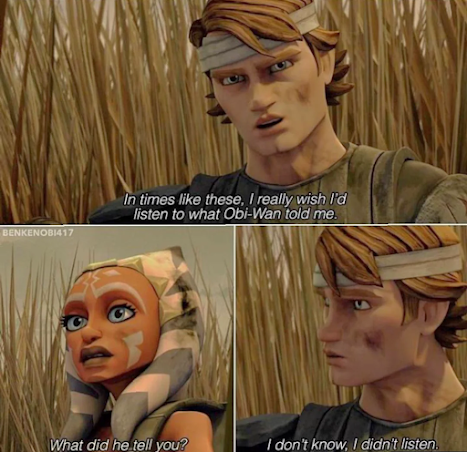
Dusanay and the Super-Real
Dunsanay is perhaps the most brilliant and inventive ofall the writers shown and his tale 'The Fortress Unvanquishable Save forSacnoth', begins with a primal alliance of folktale and epic; a moving fortresssending forth evil dreams, its only counter, a blade hidden in the spine of adragon-crocodile. The only way to defeat the crocodile is to bait it for threedays straight, smacking its vulnerable nose, without being eaten, till itstarves. Then to melt the beast, draw forth the steel, and sharpen in upon oneof its eyes, the other eye being affixed to the pommel, where it will watch fordangers.
It's almost too good to be D&D.
Then a march through a wonderous nightmare castle,meeting layers and layers and layers of fairytale guardians and satanicinhabitants. Like most of these tales the journey is too linear to make a gooddungeon on its own, but that's easy to adapt, in concept at least, it is alsovastly and beautifully strange, surreal, heightened. A potent blend ofhyper-theatre, opera, and perhaps awareness of very early film and photography?Perhaps early animation?
"Thereat the black hair that hung over the faceof the spider parted to left and right, and the spider frowned; then the hairfell back into place, and hid everything except the sin of the little eyeswhich went on gleaming lustfully in the dark. But before Leothric could reachhim, he climbed away with his hands, going up by one of his ropes to a loftyrafter, and there sat, growling."
This, surely is a Silly Symphonies spider?
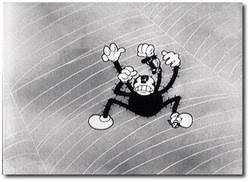
C.L. Moore - A Map Of Hell.
"She crossed a brook that talked to itself in darknesswith that queer murmuring that came so near to speech .. she paused suddenly, feeling the groundtremble with the rolling thunder of hoofbeats approaching .... a white blur flung wide across thedimness to her left, and the sound of hoof-beats deepened and grew. Then out ofthe night swept a herd of snow-white horses. Magnificently they ran, manestossing, tails streaming, feet pounding a rhythmic, heart-stirring roll alongthe ground. She caught her breath at the beauty of their motion...
But as they came abreast of her she saw one blunderand stumble against the next, and that one shook his head bewilderingly; andsuddenly she realised that they were blind ... and she saw too their coats wereroughened with sweat and foam dripped from their lips, and their nostrils wereflaring pools of scarlet. Now and againone stumbled from pure exhaustion. Yet they ran, frantically, blindly throughthe dark, driven by something outside their comprehension.
As the last one swept past her, sweat-crusted andstaggering, she saw him toss his head high, spattering foam, and whinny shrillyto the stars. And it seemed to her that the sound was strangely articulate.Almost she heard the echoes of a name - "Julienne! -Julienne!"." - C.L. Moore from 'Black Gods Kiss.
All this within a dreamlike otherworld accessed through adimensional corkscrew, not perceivable to one still wearing the cross of christ.Is it fairyland? Nightmare? Hell or one of Lovecrafts pocket realms? Whereverit is, it is a near-mappable point crawl with particular distinct locations,routes between them, particular modes of access, residents within and randomshifting encounters without. Something surprisingly rare to find in full amidstthese tales of inspiration

The Unlikeness Of The Inspiration And The Game
These stories which provide the impulse or drive to playD&D are very deeply unlike the experience of playing D&D in someinteresting ways.
No groups or protagonist gangs. (Would make zero sense ina short story, even Elrics long tale has a few too many in it) The most we getis a pair. It speaks to something slightly charming in humanity that one of ourmost developed and pleasurable ways of experiencing imagined worlds takes placethrough the medium of a conversation - because we not only want to bring ourfriends along, but doing it in a group makes the imagination more realto us. Because we are a social species, and the living presence of a complexgroup is to us really another kind of meta sensing organ, like a super-eye.
There are few dead-ends; some mazes happen (I onlyremember one; the harbour maze of the Elrics Dreaming City), but they aresolved in one go. There is no back-tracking, no finding of keys, making maps,none of what's grown to be the baseline of a procedural culture of dungeonexploration - again fun to do (sometimes), not to read about. Mostdungeons in these stories are sequences of rooms. Others are small closedspaces.
There is no advancement really. Characters might get abit better at things, get some cool items, then if the tales go on long enough,age and get a bit worse, but generally people occupy a gentle curve ofcapacity. Neither is there much specialisation-by-profession or by type -anyone can attempt anything. You got yourself a body don’t you buddy?
All these changes are adaptations between two forms ofart, the narrative and the game, and even between two experiences of time;One is linear, though containing twists and turns, it has no branching pathsand cannot be explored. There are no choices to make except for when and whereto put down the book or pick it up, for the whole world can be held in onehand, paused, reversed, stored, forgotten and re-experienced whenever you wish.The other; multiplex in experience yet bound in real-time. Here you cangenuinely go one way or another, or even just leave the dungeon. (Butyou may not be able to return. You need your friends to play this game,and a DM, and a bunch of other crap, and they are not infinitely or eternallyavailable. Your access to this world is much more bound by materialcircumstances in our own). Need Conan truly kill that goblin? It is a reality madeof decisions, its substance being choices, and what seems to be itssubstance, in truth, merely curtains and theatre scenery.
Though linked by the human imagination, by a desire for adventureand to see new lands, and by a love of Things, and of heroes, and many otherthings, the sheer chasm between a narrative and a game is very great, andgreater still because an illusion lies over it, so that few see it for what itis.
Milk On A Warm Day
The Sword and Sorcery exemplified by Conan and 'Tower ofthe Elephant', (and the best Conan stories really are very good), and byLovecraft, goes off quickly, even instantly, like cheese in summer or yoghourtin a sauna, when taken from the hands of its Masters. Like a clay pot, its relativelyeasy to make something that holds water, and rare grace to make true beauty.
These are such tender confections. And they don’t seemlike it. Because the tales are atavistic, heroic, inventive and quick,many lesser writers think they can do them, and because the basic costuming andappearance are so fungible, it’s easy to dress as them.
Kind of like, if you remember the Summer after 'The DarkKnight' came out, Heath Ledgers Joker appeared in photographs in every party,festival, cosplay thing, the guy was fucking everywhere - edgelord and theatrekid combined to make Joker-pressions the substance of the age. Because, likeHoward, and Lovecraft, the outward expression is easy to simulate. But all ofthose theatre kids and edgelords were about as much the Joker as many laterwriters were and are Lovecraft and Howard, or as much as 'Wheel of Time' is likeLord of the Rings, which is; it isn't at all, it’s merely convergent evolution,like penguins and dolphins being the same shape underwater. One in ten writersseem to understand that Conan is a relatively psychologically subtle characterwho just doesn't introspect much and does things with immediacy, or thatLovecraft thinks this shit is genuinely terrifying and you should be genuinelyscared of Infinite Things.
Vandermeers Afterword
"What if the Gnoles were non-binary?"
Is an actual line from this. From this you likely know ifyou want to read it.
Thence The Text
In substance, merely stories, and such stories as the'true heads' amongst you have probably already read and read the Grognardiareview of, and the RPG.NET thread of complaints about, I mean you are likelyfive layers deep on most of this stuff already, if I know you are all.
Yet you ‘Heads’ are still the most likely to actually buythis thing. Because they are good stories, with a few rarities, and thebook is a pleasant object, and its particular arrangement, and point of view,splaying forth the paelo-dreams of Dungeons and Dragons and arranging themnicely, in a little Wunderkammer, may amuse.
March 7, 2025
News - Weird Hope Engines
 Andrew Walter
Andrew WalterSo if you want to come and see me in 3D and tell me what you really think of me, or shoot me, now is your chance!
Weird Hope Engines is the name of the exhibition. It will be taking place in Bonington Gallery in Nottingham on Saturday 22 Mar 2025, and running till Saturday 10 May 2025.
https://boningtongallery.co.uk/event/weird-hope-engines/
A lot of people from the RPG art world will be there on Saturday the 22nd; Amanda Lee Franck (who had some art in 'Speak, False Machine), Tom K Kemp, (the artist of Gackling Moon), Zedeck Siew (of Thousand Thousand Islands and more, Scrap Princess and me Patrick Stuart.
Tom and I will be signing and selling copies of 'Gackling Moon', and I will have hardcopies of most False Parcels books to sell also.
It would like this to be a success, partly because if it is, they might do a second exhibition and there are more artists I would like to see included.






